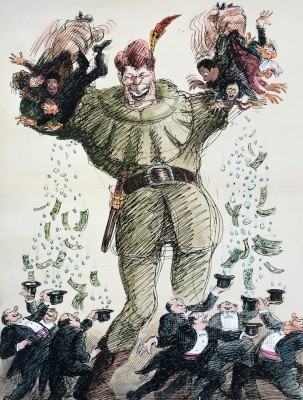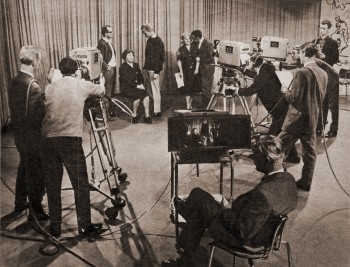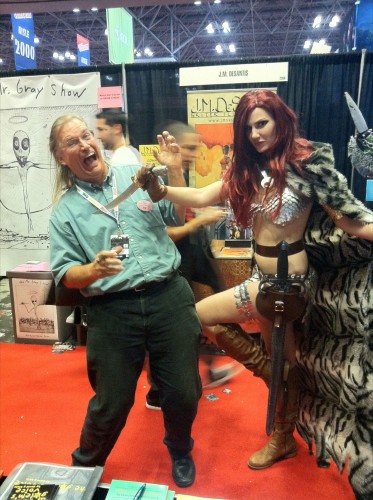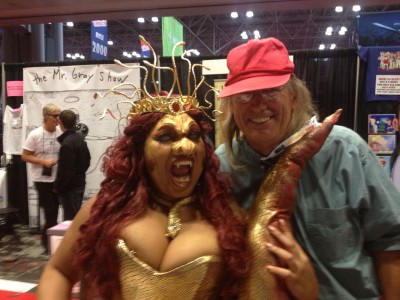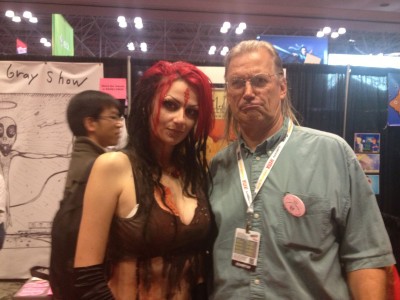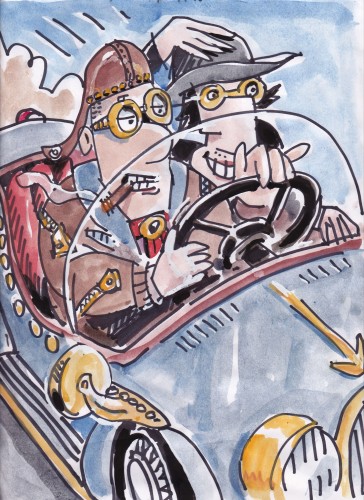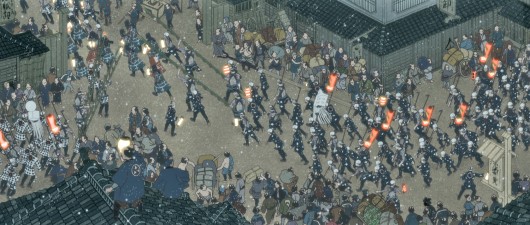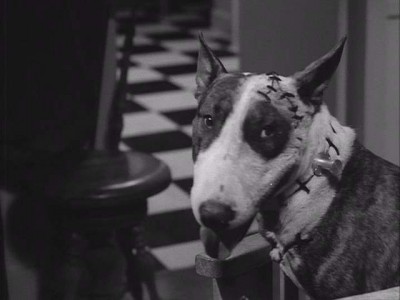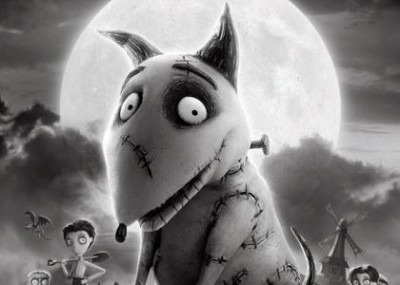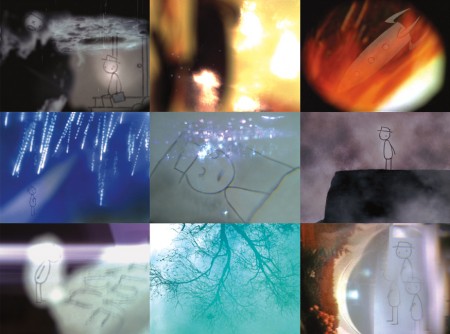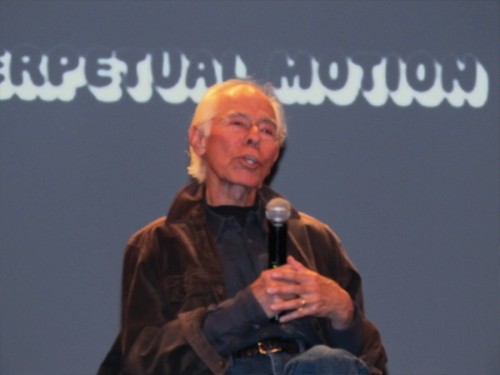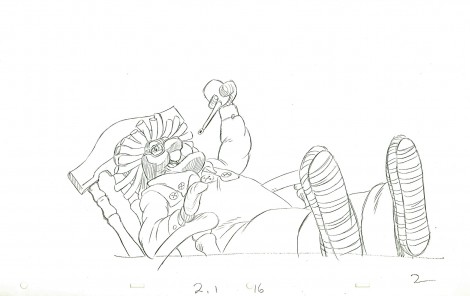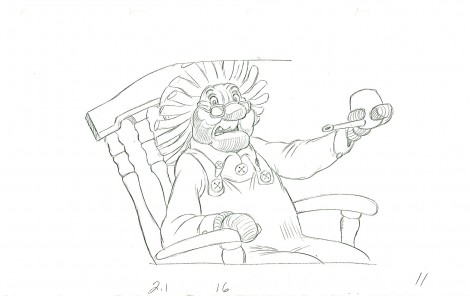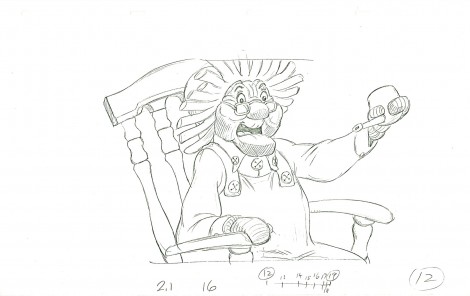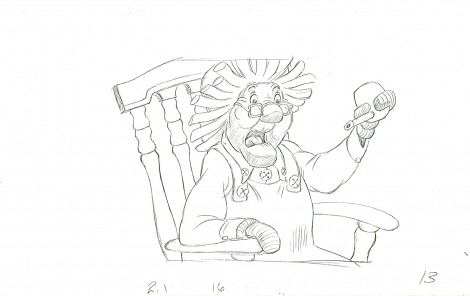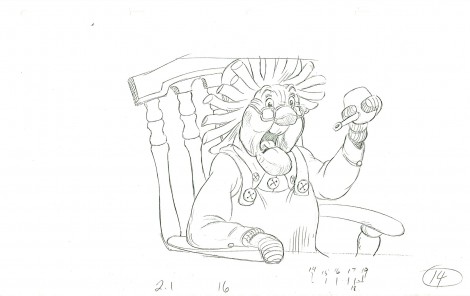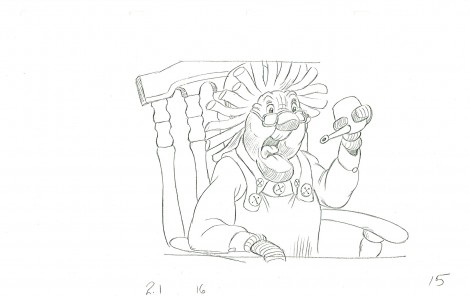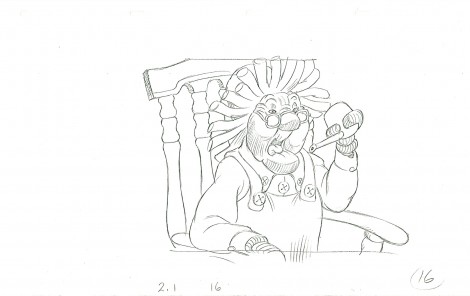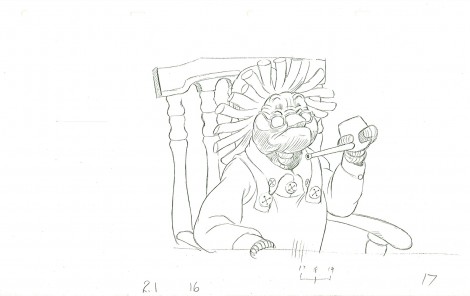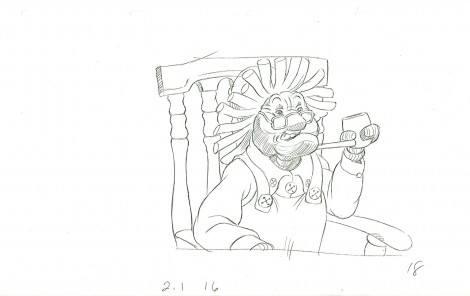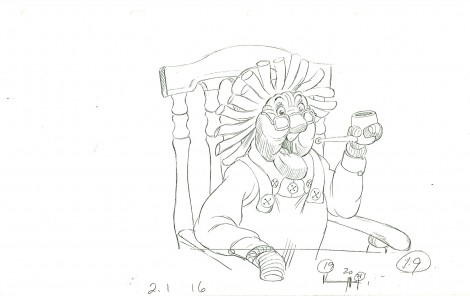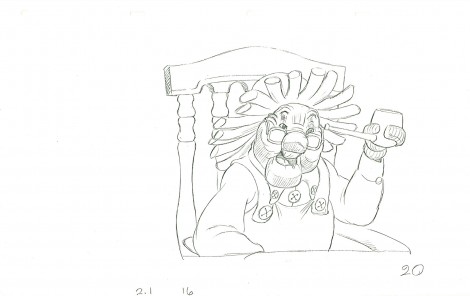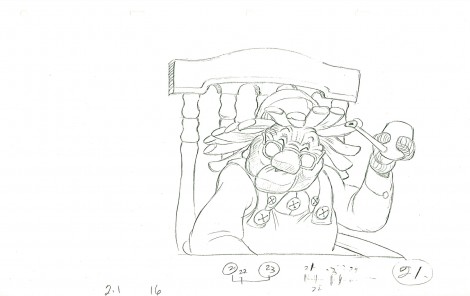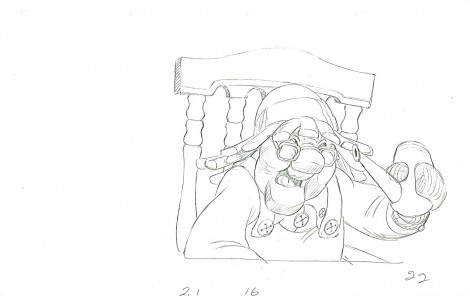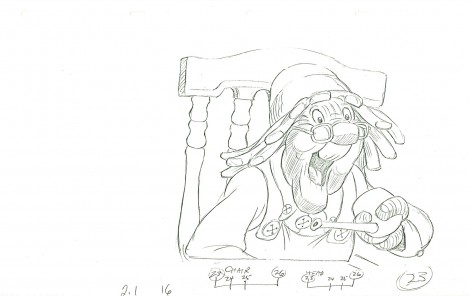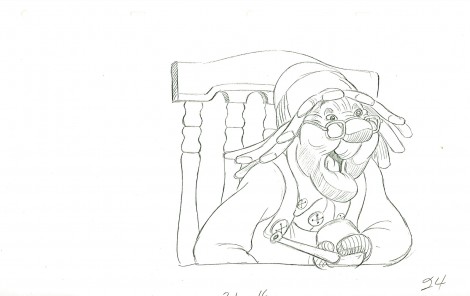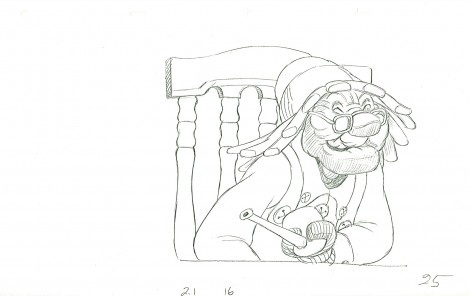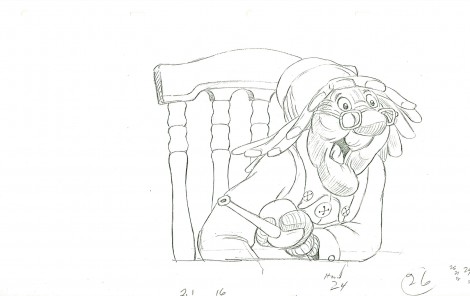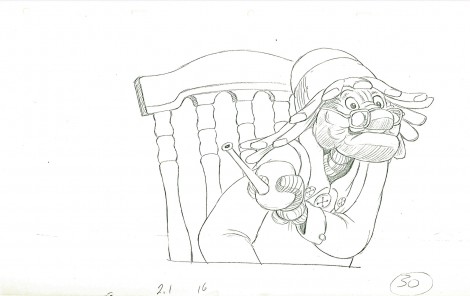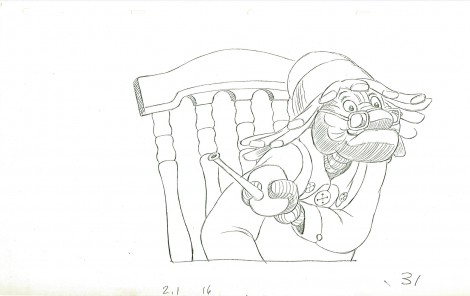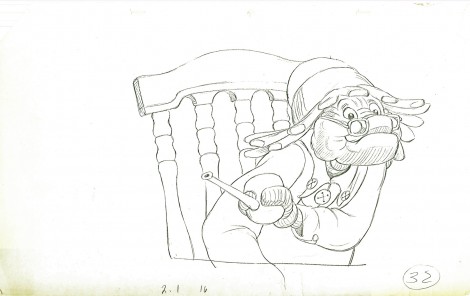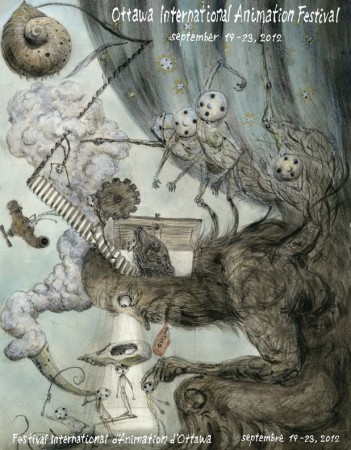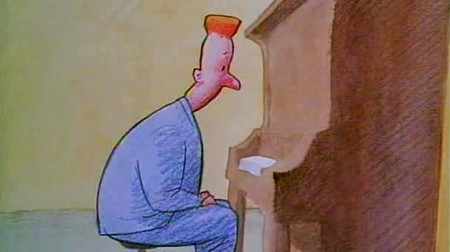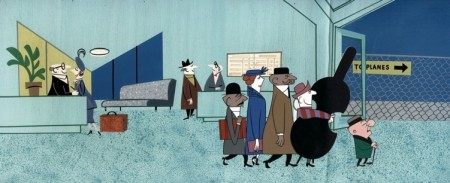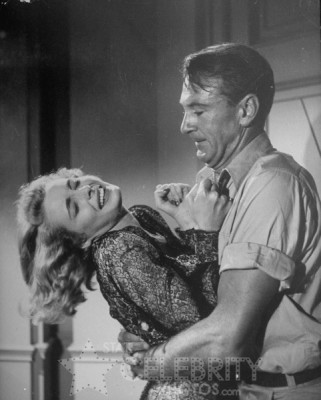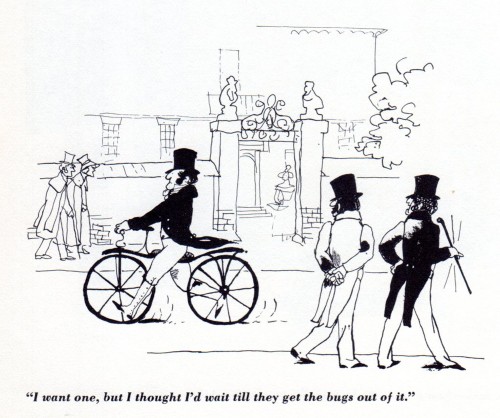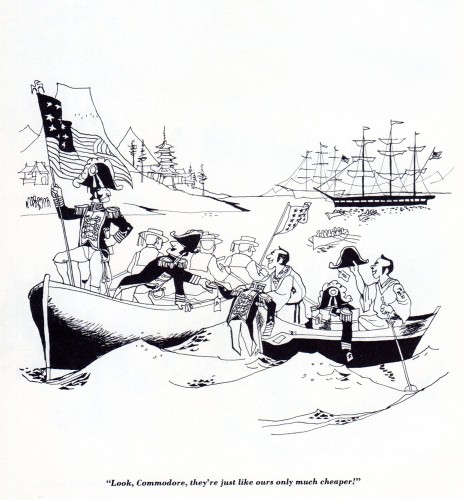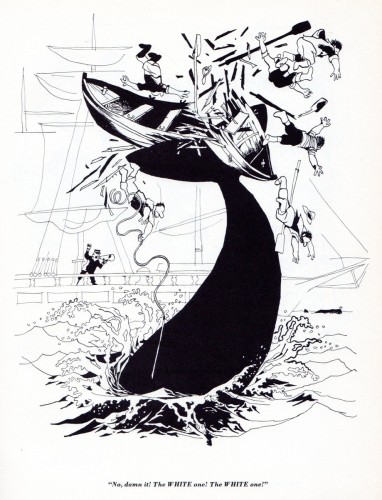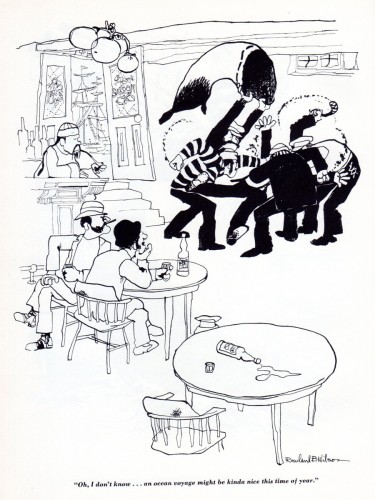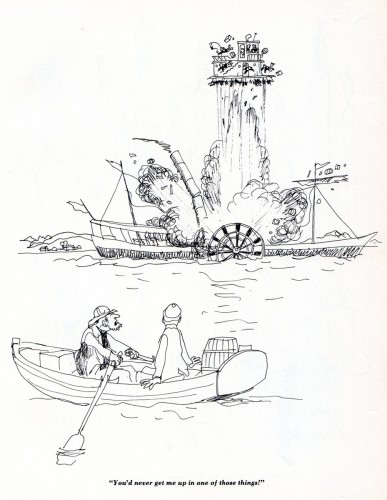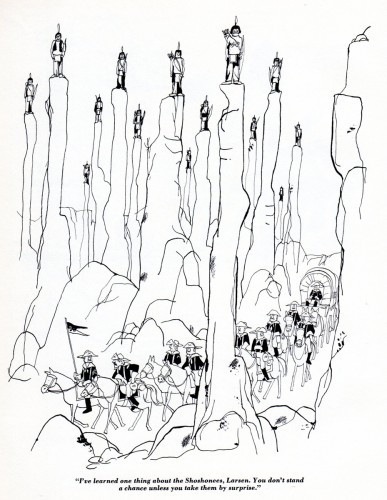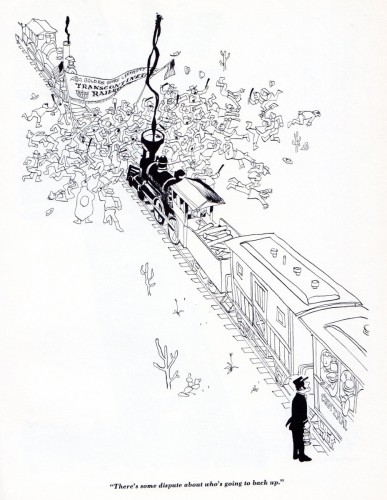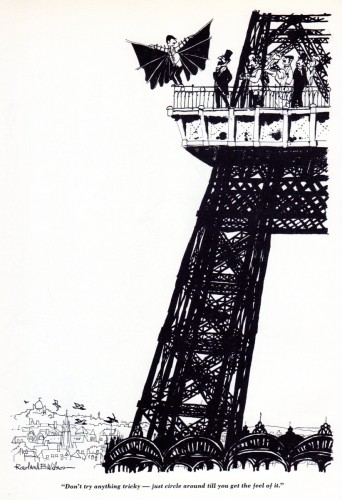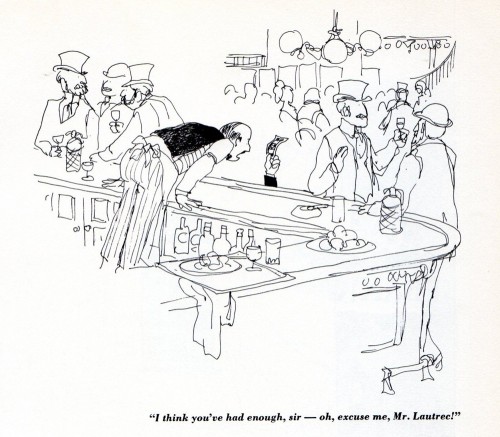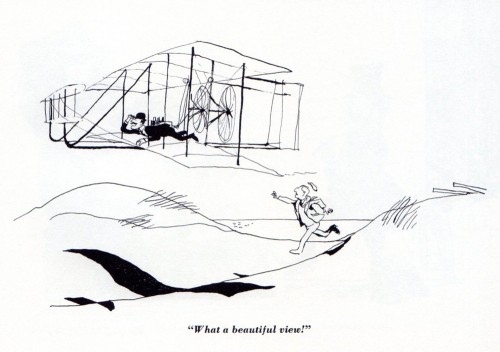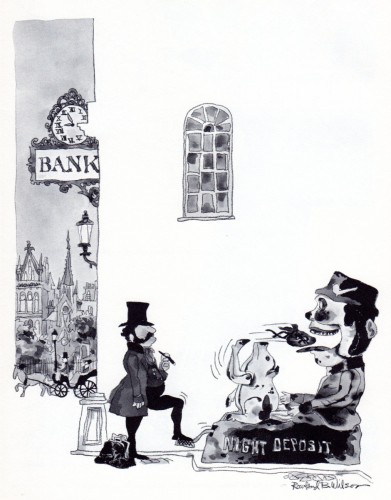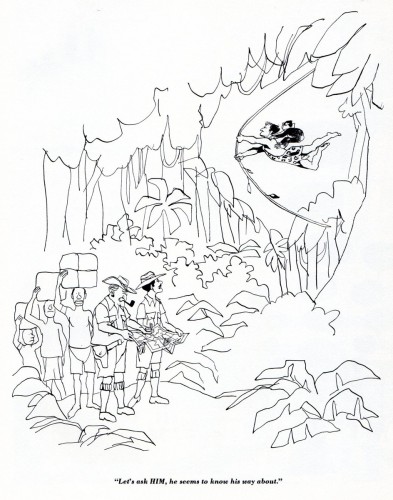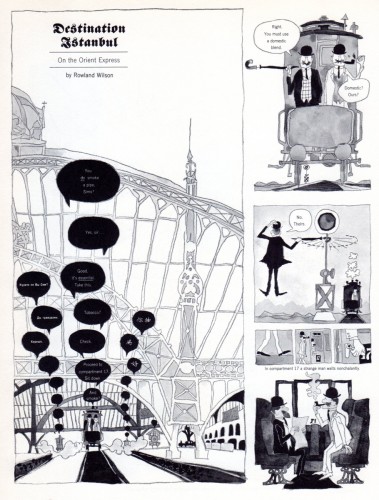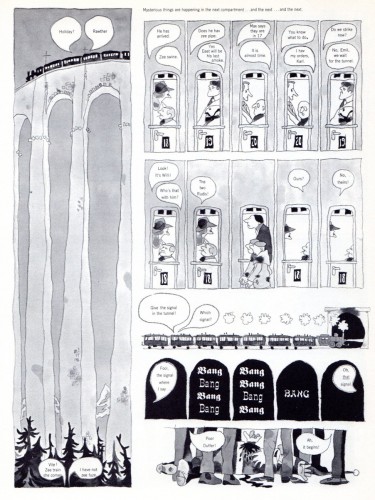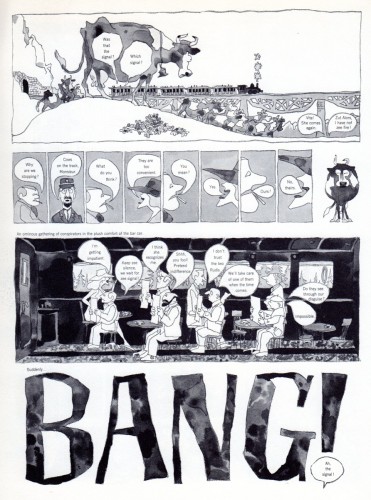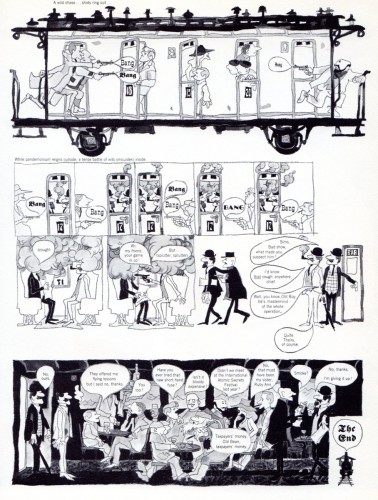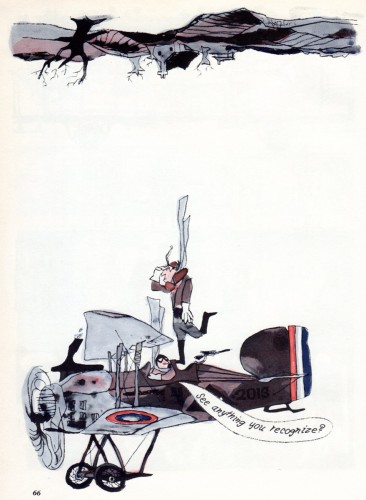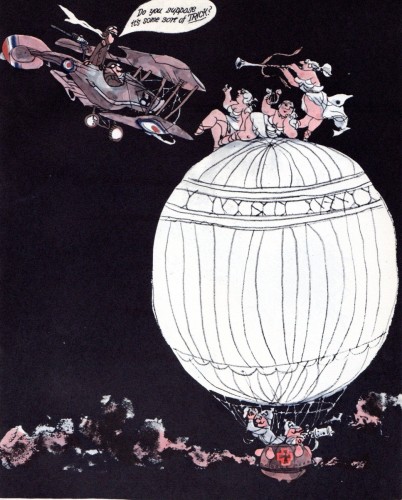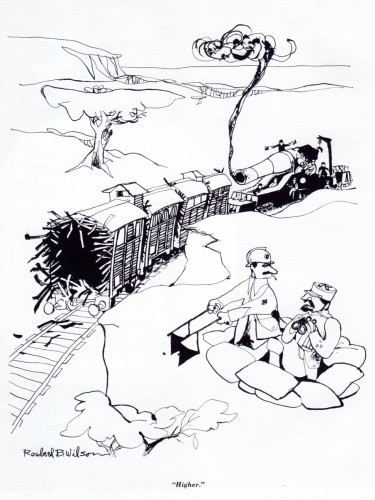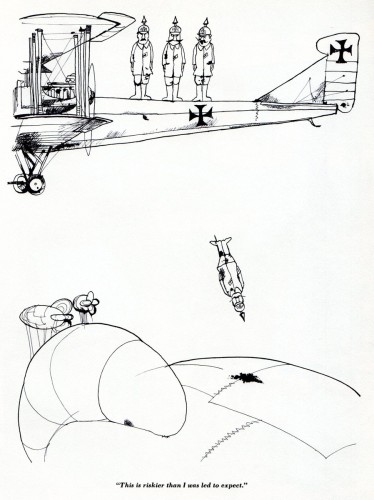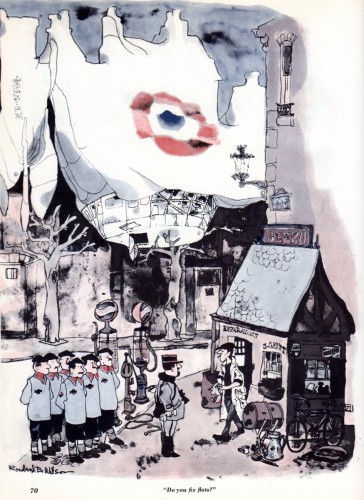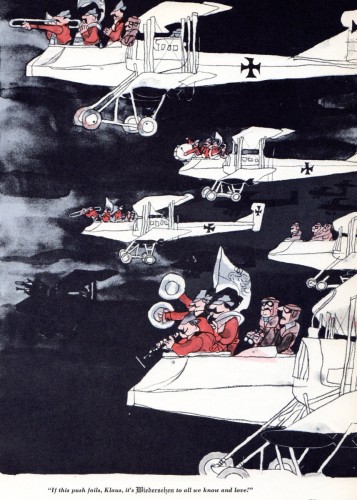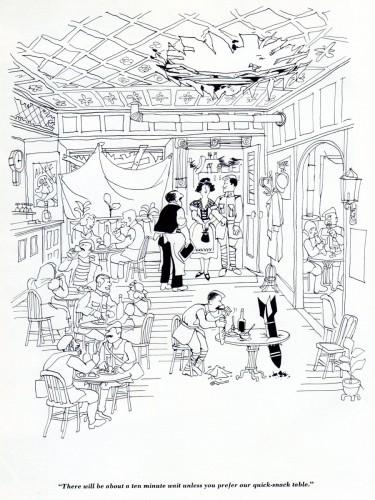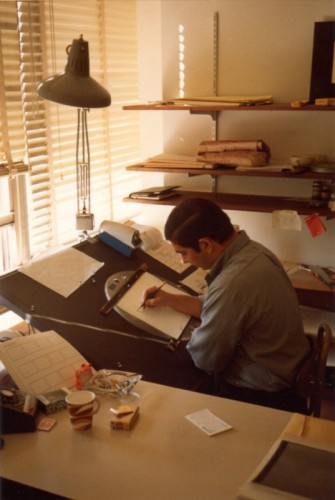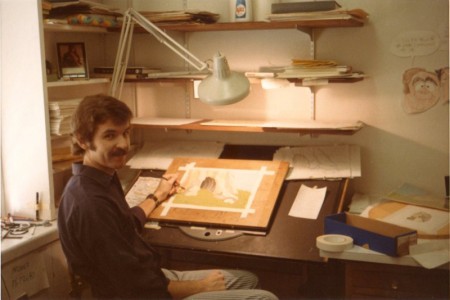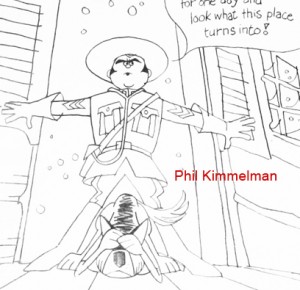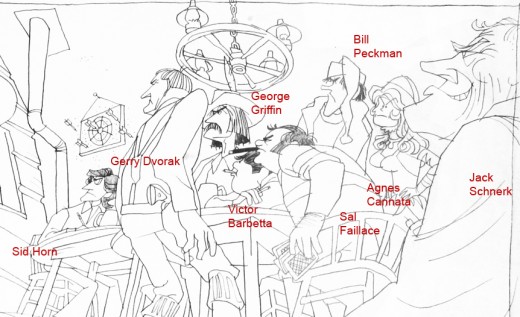Search ResultsFor "Raggedy Ann"
Commentary 27 Oct 2012 05:51 am
Next . . .
Today and tomorrow, Academy members in New York are converging to watch fifty some odd short films to make the first cut list of animated short films. Since the shorts range from five to 30 minutes, this means there are many hours of movies to watch. They’ve split it up into two days’ worth of screening. Half today and half tomorrow. By 7pm tonight my eyes should be bloodshot.
- This past week was a busy one packed to the gills. I finally had to back out of a couple of things, or I woulda gone crazy. Let’s go back to last Monday and start there:
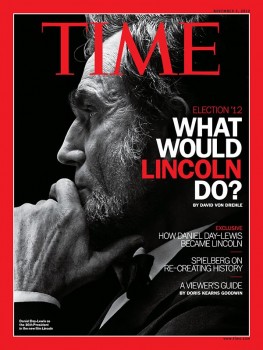 - Last Monday there was a screening of Lincoln. That’s a film I’m curious to see. The book by Doris Kearns Goodwin is great. Steven Spielberg is not much of a draw for me. I’m not his biggest fan, though there were a couple of odd little films he did that I liked, particularly Catch Me If You Can. More recent films by him have been horrible. Tin Tin was completely bad. Spielberg seemed not to know what he was doing (if, in fact, he did control that thing.) War Horse made me want to run out and rent Black Beauty so I could see a good version of this film. It was beautifully shot but the film was completely misguided.
- Last Monday there was a screening of Lincoln. That’s a film I’m curious to see. The book by Doris Kearns Goodwin is great. Steven Spielberg is not much of a draw for me. I’m not his biggest fan, though there were a couple of odd little films he did that I liked, particularly Catch Me If You Can. More recent films by him have been horrible. Tin Tin was completely bad. Spielberg seemed not to know what he was doing (if, in fact, he did control that thing.) War Horse made me want to run out and rent Black Beauty so I could see a good version of this film. It was beautifully shot but the film was completely misguided.
No Spielberg is not the reason I want to see the film. It’s the book and the script by Tony Kushner; he’s something of a genius. His play, Angels in America got better with his screenplay of the same thing. His play Homebody/Kabul is a work of brilliance, and the version I saw starred Linda Emond, who had the stage to herself for the first half hour. And I think that was the best half hour I’ve ever seen in theater and the best acting.
So Tony Kushner and Doris Kearns Goodwin are reasons I want to see Lincoln, not Spielberg. Oh, and Daniel Day Lewis looks and sounds G R E A T. Tommie Lee Jones is also getting the good reviews for the film. I want to see it. But not last Monday. Besides I wanted to see the debate and somewhat glad I did. Nice to see Romney in a flop sweat.
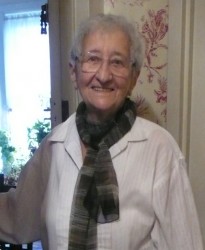 - On Tuesday I had the Memorial for Tissa, and there was too much to do. It seemed effortless, I’m sure, but it took a lot of planning and I have to thank my Heidi for being on my back about that. It was not as easy as one might have thought, and I still hadn’t written my speech.
- On Tuesday I had the Memorial for Tissa, and there was too much to do. It seemed effortless, I’m sure, but it took a lot of planning and I have to thank my Heidi for being on my back about that. It was not as easy as one might have thought, and I still hadn’t written my speech.
Finally, the event came. I’d had great help from Paul Carrillo and Rick Broas in editing the footage. It had to look simple and effortless. I copied off a couple hundred copies of the program and had folded all of them myself. I met John Canemaker at the screening room early Tuesday, and with the help of the Academy’s John Fahr we went through a quick rundown of the program. Since I was going to moderate it, I had to figure out what was going to be said on the fly. That rehearsal really helped, and it gave the projectionist a chance to see the eight times he had to stop and restart the video. The DVD looked horribly compressed on my computer, but it looked wonderful on the big screen. (Though Raggedy Ann suffered a bit. Too bad they haven’t released that film on DVD.) The Academy has a great projection system there; the sound was amazing.
It all came off well and a bunch of us went out to an upper east side pizza joint where they gave us a table for 12 to buy some drinks. That was fun, too. I’ve posted a review with a lot of photos from the event here. I’ll post the speeches next week that were given on Tissa’s behalf.
- On Wednesday Ron Diamond presented his Show of Shows program. This is an accumulation of a lot of short films Ron has seen at Festivals and is now distributing. The program is usually good, albeit long, and the animation community shows up for it. Consequently, I generally like going to it, and I reserved a couple of spaces right away. It usually gets packed quickly. However, this year, there was heavy going all week with screenings etc., and since many of the films to be screened at Ron’s show are part of the Academy screenings this coming weekend, I had to back out of it, and I did. I must say, it was a good decision considering I’ve had some back problems lately. It ain’t easy sitting in movie seats, and that’s all I’m doing this week.
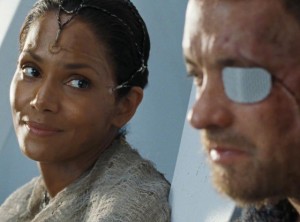 On Thursday I saw Cloud Atlas. The film was like the end credit music. It was sort of minimalist. It kept playing in cycles a bit like Phillip Glass, but not as sophisticated. The non-theme kept feeling as though it were going to burst into a strong and hummable tune, but it never did. Just circular, musical motions. That was the movie. You kept thinking it was going to burst into a strong story that you could care about, but it didn’t. It had a hundred stories with two hundred characters all played by the same people. Tom Hanks is six characters, Halle Berry plays five or six. Everybody is busy. Hugh Grant plays five characters and I think two were women. I nodded off a couple of times, but i don’t think I missed anything.
On Thursday I saw Cloud Atlas. The film was like the end credit music. It was sort of minimalist. It kept playing in cycles a bit like Phillip Glass, but not as sophisticated. The non-theme kept feeling as though it were going to burst into a strong and hummable tune, but it never did. Just circular, musical motions. That was the movie. You kept thinking it was going to burst into a strong story that you could care about, but it didn’t. It had a hundred stories with two hundred characters all played by the same people. Tom Hanks is six characters, Halle Berry plays five or six. Everybody is busy. Hugh Grant plays five characters and I think two were women. I nodded off a couple of times, but i don’t think I missed anything.
This was more of a video game than a movie. You kept going back and forth to different levels. If the characters got in a bad enough jam we’d cut away to another level. The only problem was that the viewer isn’t controlling the level shifts. No surprise that the directors did The Matrix. This is the film for those with Attention Deficit Disorder.
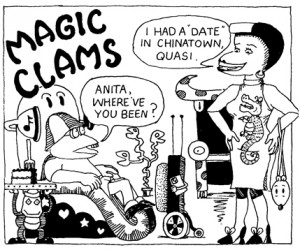 On Friday the Museum of Modern Art celebrated the work of Sally Cruikshank. There was a screening followed by a dinner at the Italian restaurant to the rear of the museum, Il Gattopardo.
On Friday the Museum of Modern Art celebrated the work of Sally Cruikshank. There was a screening followed by a dinner at the Italian restaurant to the rear of the museum, Il Gattopardo.
I was there when Sally Cruikshank‘s Quasi at the Quackadero burst onto the scene in 1975, and I watched closely as her career developed. There were a number of short films featuring the characers from Quasi. She had moved to San Francisco and worked closely with Kim Deitch. He, for a while, was her boyfriend and would assist her and paint cels etc. in the making of the films. Sally was making a feature of Quasi – it was that big a success. It never quite happened, so I assume she never raised the money. There were a couple of trailers made which were shown, as films in their own right.
Quasi has a curious story and introduces characters galore, one more funny than the other. Actually, there’s no real story other than that Quasi and Anita go to a club and meet up with a world of wild. Her style has been often compared to that of the early Fleischer films like Bimbo’s Initiation or an early Van Buren short like In a Cartoon Studio. In that her
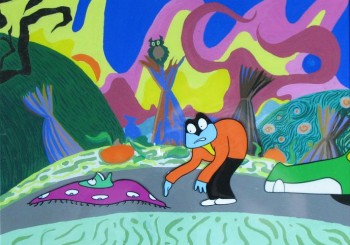 work has a odd drawing style with all the characters completely malleable, almost as though they had no bones, and an innocence in the movement, I have to agree. The Fleischer work always seemed open to the animators’ adding to the curious layouts peculiar motions. The characters often move a long way out of whatever way they’re going to get back to the completion point, and it’s all about the funny. She truly understood the Fleischer house style and did it well in her own drawing style. They’re very peculiar films.
work has a odd drawing style with all the characters completely malleable, almost as though they had no bones, and an innocence in the movement, I have to agree. The Fleischer work always seemed open to the animators’ adding to the curious layouts peculiar motions. The characters often move a long way out of whatever way they’re going to get back to the completion point, and it’s all about the funny. She truly understood the Fleischer house style and did it well in her own drawing style. They’re very peculiar films.
Sally also did the high-budget job of titles for the movie, Ruthless People as well as the animated sequence for the Twilight Zone feature film directed by Joe Dante. The big budget bought a very smooth and rich style which goes like a bandit. However, my favorite of her films was Face Like a Frog. This is like her hallucinogenic style on speed. Everything is moving all the time, and there’s just so much life in it.
Because the films came in so many different formats, the projectionist must have had a hell of a time keeping the evening flowing. However, it seemed not to be a problem. The show felt like one of those many screenings we used to attend in the 70s. Lots of black in between films and a feeling that you weren’t quite sure what was going to come next.
Sally has basically left animation. After trying hard to work in Flash for a couple of years, she decided that it was too difficult for what she wanted.There were a couple of shorts in this process, and they seemed to be fighting a constraint that the earlier films didn’t have. She has turned to watercolor painting. Her films seem like they’ve gone through the Fleischer/Van Buren mode but using a filter of something more modern. A similar but very different effect comes through the work of Kim Deitch. They both obviously influenced each other and are both remarkably original in their art. I’d like to see what Sally’s watercolors look like.
I hadn’t met Sally prior to last night, so I was glad to have been invited by the Museum’s Josh Siegel. He did a great job of organizing the event. J. Hoberman, was a longtime head critic for NY’s Village Voice and was only recently downsized by that paper. It completely tore apart the Voice’s film section. Hoberman moderated the program asking questions and taking a few from the audience. He was well-informed about Sally’s career and it was obvious that he truly enjoyed the films. I’ve been a real fan of his writing and criticism, so I was pleased to have had the chance to talk with him. (He did review one of my films, the music video Caverns – scroll down when you get there. He didn’t like the film very much and felt I’d stolen a technique of split screen from another music video director. In poiint of fact, I didn’t; I just wanted to play with split screens.)
Il Gattopardo is a pleasant place; the museum usually takes us to a table in the rear. Often, if it’s a large group, there will be a very long table, and we’ll talk with those closest to us. The long tables make it difficult to chat with those some six table-lengths away. Last night, it was a small group at an over-sized round table. Sally and her husband, J. Hoberman (who moderated the event) with his wife and daughter, Josh Siegel, John Canemaker and Joe Kennedy and me. (Heidi works Friday nights and couldn’t attend.) The meal was good, the chat was pleasant, and the evening was a success.
The film program will be repeated at MoMA on Monday at 4pm for those who’d like to see it.
There’s a good interview with Sally here.
Backto the start. Today and tomorrow there will be 13 hours of cartoons to sort through. Lots of complaints, but I kind of like the whole thing. Maybe I’ll write about it for tomorrow’s splog post.
Ed Sorel – Enigma
- Mark Mayerson directed me to this excellent article in The Comics Journal that speaks about Ed Sorel, the great illustrator whose art has graced many magazines including a number of issues the New Yorker. The article was written by R.O. Blechman and naturally has the wit and poetry of the great writer that Bob Blechman is. This is quite a piece, despite its brevity, and I urge you to take a look.
Commentary 20 Oct 2012 06:37 am
Acorns
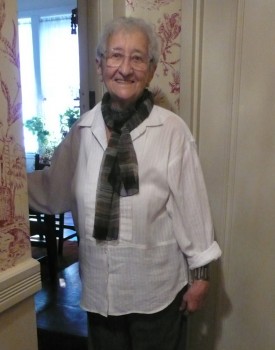 - We’ve planned a memorial for Tissa David that will take place in New York at the Academy Lighthouse Theater on Tuesday October 23rd at 7pm. The program will include five speakers and will have a fair share of clips from the many films Tissa animated. The studios that will be rimarily represented include: The Hubley Studio, Raggedy Ann & Andy, R.O.Blechman/The Ink Tank and Michael Sporn Animation.
- We’ve planned a memorial for Tissa David that will take place in New York at the Academy Lighthouse Theater on Tuesday October 23rd at 7pm. The program will include five speakers and will have a fair share of clips from the many films Tissa animated. The studios that will be rimarily represented include: The Hubley Studio, Raggedy Ann & Andy, R.O.Blechman/The Ink Tank and Michael Sporn Animation.
The films will include: Eggs, Everybody Rides the Carousel, Cockaboody, Raggedy Ann & Andy, Candide, The Soldier’s Tale, The Red Shoes, Lyle Lyle Crocodile, The Marzipan Pig, The Dancing Frog and POE.
Where: Academy Lighthouse Theater, 111 East 59th Street, lower level
When: Tuesday, October 23rd, at 7PM
Photo by Mate HidvegiAdmission: free
Seating: first come, first served
It’s been very interesting for me to prepare all this material for the program. As a matter of fact, just developing the program has been interesting.
In the last month or so, working out of Buzzco studio, I watched Candy Kugel and Rick Broas prepare the material for their ASIFA East program celebrating the work of Perpetual Motion Studios, a commercial animation studio where a number of people got their start. A lot of film had to be prepared for DVD projection and people had been organized to act as a panel where they would reminisce in front of the audience that came to see the show. Essentially, what Candy and Rick were doing was developing a theatrical program of mixed media which would celebrate this studio and hopefully entertain the audience that came to revisit the studio, one that meant a lot toone contingent of NY animation workers and was a curiosity for younger workers. The organizers of the event not only wanted to reunite with old friends, but they wanted to entertain an audience at the same time.
For me, it was quite informative watching all the work that went into the program as well as seeing the final results and assessing what, to my mind, worked or didn’t work.
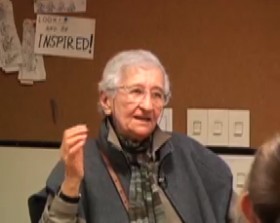 Now I’m doing something similar. I’m working a lot of material from Tissa David‘s life into a program that will hopefully entertain an audience while impressing them with the enormous talents of the woman who’d so affected my life. In short, I’ve been trying to develop a mixed media theatrical event, but I’ve been hoping not to let Tissa down since this will be the final farewell to her for many of those who will come. Needless to say, it won’t be my final farewell to her. She’s been a great and close friend, an animation wizard and something of a cherished advisor on many things. She was always there to talk to, to share films with and to chat about animation as well as our lives. Her memory is more than alive in the front of my mind.
Now I’m doing something similar. I’m working a lot of material from Tissa David‘s life into a program that will hopefully entertain an audience while impressing them with the enormous talents of the woman who’d so affected my life. In short, I’ve been trying to develop a mixed media theatrical event, but I’ve been hoping not to let Tissa down since this will be the final farewell to her for many of those who will come. Needless to say, it won’t be my final farewell to her. She’s been a great and close friend, an animation wizard and something of a cherished advisor on many things. She was always there to talk to, to share films with and to chat about animation as well as our lives. Her memory is more than alive in the front of my mind.
In short, I want to get this show right. That is, after all, what I am doing . . . putting on a show.
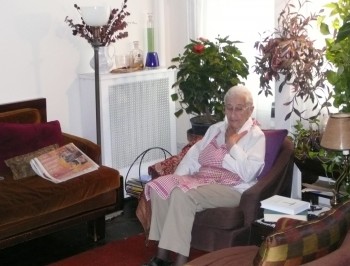 For the past week I’ve been working and reworking clips that’ll be screened, and going through many, many still photos of Tissa and her artifacts to prepare a little slide show that will get the crowd into the right mood as they enter the theater. Once you pick out the right pictures to present, there’s a delicate order to select them, tie them to a piece of music and try to create a short bit of a movie. Speaking of music, that alone is something difficult
For the past week I’ve been working and reworking clips that’ll be screened, and going through many, many still photos of Tissa and her artifacts to prepare a little slide show that will get the crowd into the right mood as they enter the theater. Once you pick out the right pictures to present, there’s a delicate order to select them, tie them to a piece of music and try to create a short bit of a movie. Speaking of music, that alone is something difficult
Photo by Mate Hidvegi to select. Certainly, with Tissa,
it meant sticking to classical as opposed to
popular music. Even then, I knew she didn’t like Beethoven so I couldn’t use “Ode to Joy,” for example. (Wouldn’t that have made some kind of memorial song!) I listened to a lot of Kodaly and pulled back since I’m not crazy about his music, I didn’t want anything at all Romantic. I listened to a lot of music that I like. No, I’d be too tempted to pull something from John Adams or Phillip Glass’ catalog. That most definitely is not Tissa. Ultimately, I settled on Bach. I found a nice version of his prelude from Bach´s Cello Suite No. 1 as performed by Yo Yo Ma.
I want to offer a giveaway to the audience, a little program that they’ll have for review after they’ve left. The slide show has been completed (and I think successfully), and the decisions for all the cuts and clips have been made for the screening, and all the speakers have sent me their pieces on Tissa. Now I have to write a program and will have to get a couple hundred copies printed over the weekend.
All in all, it’s been a formidable month, this last one. A lot’s been done, and I’m looking forward to the event. I just worry a bit that now I’ll have to say goodbye to Tissa.
Order of Merit to Tissa’s Sister
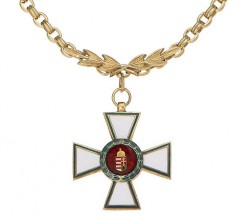 - On the 56th anniversary of the 1956 Hungarian revolution the memorial conference was held.
- On the 56th anniversary of the 1956 Hungarian revolution the memorial conference was held.
Yesterday, one of Tissa’s sisters, Szaniszla, was decorated with a very highly prestigious medal – Order of Merit of Hungary.
After the revolution in 1956, Szaniszla was jailed because she participated and supported the revolution.
(Tissa had escaped Hungary and fled, ultimately, to Paris some seven years earlier in 1949.)
Why Obama Now
I saw this excellent piece of anmation on the Animation Guild Blog this past week, and I couldn’t help but pass it forward. Lucas Gray did a fine job of illustrating a talk by Barack Obama and executed it with style and intelligence. It’s a flash work that exploits the program for all it’s got. If John Sutherland were making films today, this is probably what they’d look like.
Hans’ Dream
- Hans Bacher in a new post on his site, one1more2time3, is invading Eddie Fitzgerald territory with an imagined construction, a dream of the future from a child of the past if he had this present. A peculiar description, but it’s probably apt. Take a look for yourself.
A Dancing Kickstarter
I received this note this week and found it interesting enough to post:
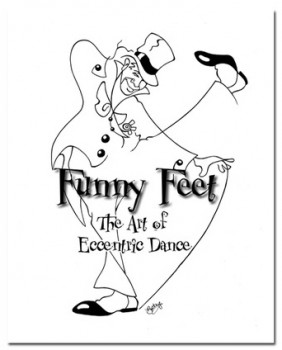 Hi Michael,
Hi Michael,
My name is Betsy Baytos and my colleagues, I am writing to see if you could kindly help post my Kickstarter Film project, on your site and blog. ‘
FUNNY FEET: The Art of Eccentric Dance‘
A brief introduction: A former Disney Feature Animator and Eccentric ‘comedic’ Dancer, my work now focuses on animation choreography (i.e.:’Emperor’s New Groove‘ & ‘Princess and the Frog‘). I have also performed as the Muppet Show’s ‘Betsy Bird’, teaching/lecturing Eccentric ‘character movement’ at Disney and Cal Arts animation classes, Oxford University’s ‘Fred Astaire Conference’,consulting for Cirque Du Soleil, Universal Studios Japan and the Ringling Bros. Alumni.
I have just launched a Kickstarter campaign to finance the completion of my film research, for a Documentary, ‘FUNNY FEET: The Art of Eccentric Dance‘, with over 45 celebrity filmed interviews:(i.e.: Red Skelton, Jerry Lewis, Dick Van Dyke, Shirley MacLaine, Mrs. Buster Keaton, Chuck Jones, Al Hirschfeld, Joe Grant, Ward Kimball, Joe Barbera, Frank & Ollie, Myron Waldman, Richard Fleischer and many more….) All with a focus on how eccentric dance inspired the visual arts and especially animation, as many of the great eccentric dancers were models for our most beloved cartoon characters. .
My entire research & film collection will be donated to the Motion Pic Academy of Arts & Science here, as a final home when all is said & done.
To see the Kickstarter proposal go here.
NY – Comi Con – NY
Tom Hachtman is a good friend. I love his art work and have supported it from the time I first saw his comic strip, Gertrude’s Follies, in the SohoNews, an extant paper from the lower rungs of Manhattan’s coolest neighborhood. Tom and I spent a lot of time storyboarding a very low budget animated feature pulled from his strip. If nothing else it made me laugh for months while we were drawing it.
Well, Tom was at the NY version of the ComiCon held Oct. 11-14 at the Javits Center on NY’s far West side. Tom was promoting a couple of books Gertrude’s Follies, Fairly Grim Tales (which he illustrated). I’m pleased that Martin Kozlowski pushes to keep Tom published; obviously the man has good taste.
Tom wrote a funny account of his four days there:
- I was there for all four days of the event that opened Thursday 10/11/12.
Directly across from us there was a booth promoting something called ‘The Mr. Gray show. They were showing (on a laptop) a pilot episode that included an interview with David Lynch where he talks about his Jack Russell terrier Sparky. There is some ANIMATION at the beginning.
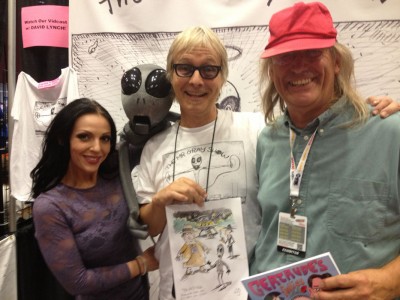
(LtoR) Salvina Vitali starring as Agent BJ, Mister Gray the alien puppet
from planet Zeb, the show’s creator Dusty Wright holding a drawing of
Gertrude and Alice meeting Mr. Gray, and, in the red hat, yours truly.
For four days I watched a parade of comic book fans in costumes depicting their favorite characters. I don’t know who these people are and I often don’t know who the character is they have dressed up as. Day four Larry pointed out an approaching Poison Ivy and said, “You must be tired – you don’t even look.”
Then along came Red Sonja to put me out of my misery – best shot of the day.
Since I love redheads I had my picture taken with Poison Ivy, Black Widow, Red Sonja and many more terrifying creatures I can not identify.
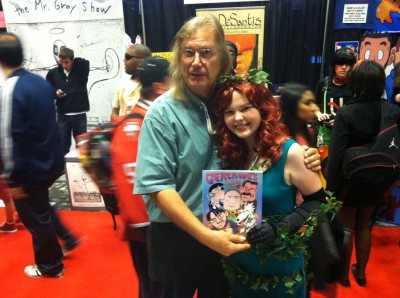
w/Poison Ivy
Anyone who bought a book got a drawing. Here are a few that I didn’t give away.
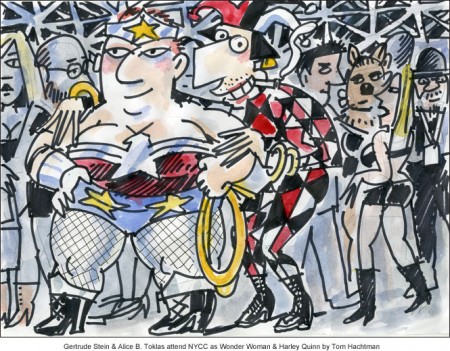
Gertrude and Alice at Comic Con dressed as Wonder Woman and Harley Quinn –
these were two very popular costumes at Comic Con.
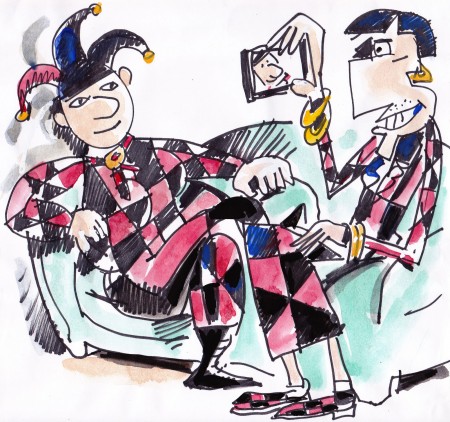
Alice taking a photo of Gertrude with her iPhone –
both in Harley Quinn costumes.
Commentary &commercial animation &Photos 13 Oct 2012 04:53 am
Stuff Happens
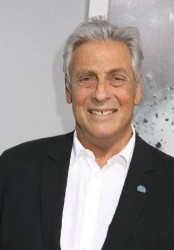 - Tuesday brought an Academy event. Howard W. Koch Jr., known widely as “Hawk,” succeeded Tom Sherak as president of the Academy last August. He came to New York to meet the East Coast members, here, and to congratulate this year’s crop of new members. (Emily Hubley is one of the brand new members in New York.)
- Tuesday brought an Academy event. Howard W. Koch Jr., known widely as “Hawk,” succeeded Tom Sherak as president of the Academy last August. He came to New York to meet the East Coast members, here, and to congratulate this year’s crop of new members. (Emily Hubley is one of the brand new members in New York.)
There was an excellent reception at the Stone Rose Lounge, a relatively new eatery in the Columbus Circle area. The event was pleasant with a notable number of celebrities milling about: Daniel Craig, Rachel Weisz, Billy Dee Williams, S. Epatha Merkerson, Richard Gere and Michael Douglas. There was plenty of drink (martinis seemed to be the drink of choice) and some great hors d’oeurves. The lobster tacos (about 1/2 inch long) and the meatball sliders were both delicious.
The speeches were kept to a minimum. Howard Koch was the only speaker and he spoke for maybe five minutes. The rest was the members chatting each other up. Heidi and I got to talk with Mr. Koch in a relaxed situation for about 15 minutes. We spent plenty of time with John Canemaker & Joe Kennedy, Emily Hubley & Will Rosenthal, Biljana Labovic, and Candy Kugel with her sister, Tina Hirsch. As I said, it was a pleasant evening.
- Thursday evening I saw a screening of Burton’s Frankenweenie. See my review, below.
- On Friday ASIFA East and The School of Visual Arts Animation Department had a regrouping of the original commercial animation studio, Perpetual Motion Studios. I wrote about this in depth with some pictures from the event, at the end of this post. Scroll down.
While I was watching this event, the Yankees won the division series over the Baltimore Orioles. Buck Showalter and his Orioles put up an amazing fight. I’m exhausted having gone through the competition with this team that came out of nowhere. Onto Detroit, next.
the Brew Makes Some Changes
I didn’t get the note from anyone that Cartoon Brew was changing their look. It was a surprise one day to go to the site and find something that looked wildly commercial, all headlines and no stories. Oh, wait. The stories are there, you just have to keep clicking on things. It looks incredibly commercial and blaring so early in the morning. I guess it’s good for them. It was a surprise to me, and it feels a bit overwhelming. I’m not sure I like going to the site of loud headlines. Though they do have all the information in cartoon town. What’re you going to do? You have to go with the flow, even when you’re heading downstream or so it often feels. Congratulations Cartoon Brew.
Katsuhiro Otomo at Platform Festival
- I received this in my email folder:
- I’m excited to share some big news with you. Anime legend Katsuhiro Otomo is slated to appear at the PLATFORM INT’L ANIMATION FESTIVAL at the end of this month, where they will be screening his new short film, COMBUSTIBLE, and also honoring him with a Lifetime Achievement Award. See attached for a full press release.
It would be great if you could cover this great event and also run the announcement ASAP. I’m including an image as well, and can provide a couple more if you’re interested. As space is limited at this event, please let me know if you are interested in a press pass to the event, and also if you’d like to interview Otomo 1:1 while he is here.
How could I not partake of such an interview. I immediately wrote back to say, yes., I wanted IN.
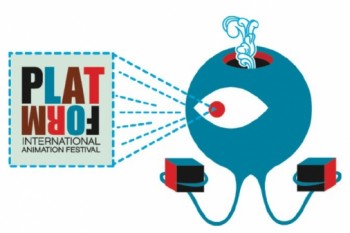 But first, I had to find out who Katsuhiro Otomo is. I looked him up on Google and found out he had directed Akira.
But first, I had to find out who Katsuhiro Otomo is. I looked him up on Google and found out he had directed Akira.
Now, Akira is one of those films that I’ve never been able to sit through. Lots of overworked, integrated animation takes place in a very convoluted story that is virtually impossible to follow. I didn’t make it past five minutes on the first attempt. Fifteen minutes on the next half dozen times. The film is magnificently rendered large, but totally impossible to sit through.
Look at that still, at the top of this post. Crowds of people running and milling about. No focus; no individuals. This is the chosen still to send out accompanying the film. A crowd shot. Busywork. No focus on characters, no identification with any personality. A crowd. That, to me, is Akira.
Sure, I’d like to meet the guy who made this film. It’s such busywork, that it defies itself and its own creation.
However, the Platform Animation Festival will take place in Los Angeles on Friday, October 26, 2012 to Sunday, October 28, 2012. Jerry Beck will interview Mr. Otomo on Sat, Oct. 27th at 9:30 PM. It might be worth attending. Jerry knows what he’s talking about when it comes to Manga, and Mr. Otomo will be making a rare visit to LA.
On Thursday evening, I saw Tim Burton‘s most recent puppet animated feature, Frankenweenie. This, as many of you already know, is a reworking of the live-action short Burton did in 1984. In many ways it doesn’t improve on that short. It basically tells the same story with an added number of homage sequences devoted to various horror flicks that Burton obviously loved.
The film is sweet with no strong conflicts to trouble little children. The animation feels ever-so-slightly limited, but I liked it. It often felt like there was a smile behind the movement, and that the animators were having fun on this film. Quite a few eccentric moves helped to make the gestures feel more individual. Unlike Para Norman, the film isn’t overly slick. That Leica film felt as though it might have been cg animated. You couldn’t really feel the fingerprints on the action. I do like that aspect of Frankenweenie. I always was sure it was real objects being animated, not some cgi puppet.
However, there was often a stiffness to the motion. In some of the first scenes, the lead boy walks as if his legs had no knees.
This might have been less noticeable if I had been more involved in a deeper story, but that is a big problem with the film. The story isn’t particularly engaging. It’s just sweet.
Of Burton’s three animated features this was the least of them.
It’s Such a Beautiful Day
It’s Such a Beautiful Day is the title of the feature which Don Hertzfeldt compiled of three shorts he produced: Everything Will Be OK (2006), I Am So Proud of You (2008) and It’s Such a Beautiful Day (2012). These shorts formed a trilogy which Hertzfeldt designed to create this feature.
It opened at the IFC theater in New York and received modest reviews from the NY press.
- Neil Genzlinger of the NYTimes wrote on Oct 4th: “Considering that he’s a stick figure, Bill, the main character in “It’s Such a Beautiful Day,†sure does have a complex internal life. And this animated film by Don Hertzfeldt does an amazing job of making you feel it, in all its sadness, terror and transcendence.”
The film will continue to tour around the country playing at many cities from Columbia, Mo to Tucson, Az to Chicago, Il. The planned schedule for the tour cn be found here (scroll down).
There’s an excellent interview with Hertzfeldt in The Onion‘s AV Club section which was printed last April when Hertzfeldt initially toured with the film.
Perpetual
- Yesterday, ASIFA East and The School of Visual Arts Animation Department had a regrouping of the original commercial animation studio, Perpetual Motion Studios.

Candy Kugel spearheaded this event working with support from JJ Sedelmaier, who started in Perpetual. Quite a few past employees of the studio came back for the celebration and made for an interesting evening. For them, it was no doubt a reu-nion, for the rest of us it was a visit to a key commercial studio in New York.
The event was prompted by the recent deaths of three of the key personnel. Vincent Cafarelli, Buzz Potamkin and Hal Silvermintz all died within six months of each other, this past year. Rather than making it a memorial for the three, they made it a celebration of the studio’s work.
Tom Warburton acted as the host for the evening. He originally was an intern starting out in Buzzco Associates, the studio that followed Perpetual. Mordicai Gerstein, Russell Calabrese, JJ Sedelmaier, and Thomas Schlamme all came in for the event and sat on a panel up on stage in front of the screen.
This panel talked about the work done at the studio and the different roles they all played,from designing to animation to making music and sound effects.
In the audience there was quite a fill of other artists and past employees from the studio. Rose Eng and Marilyn Carrington were key people in I&Pt. Background Artists Linda Daurio and Cotty Kilbanks, Animators Doug Compton and Doug Crane, Layout Artist Wayne Becker, Editor Jon Levy, Producers David Sameth and Marilyn Kraemer all reunited.
I came from a different crowd of that same period. Mine was less commercial and more theatrical a group so I didn’t know many of these people. Yet, I knew of many of them and was glad to finally meet some. I was pleased finally to meet Mordi Gerstein, having animated his children’s book The Man Who Walked Between the Towers.
I’ve seen Wayne Becker‘s drawings for years, so it was a pleasure to finally meet up with him. I’d worked frequently in my own studio with the brilliant Doug Compton, so I was glad to see him, and I knew Doug Crane from Raggedy Ann.
It’s amazing the number of people who started out at Perpetual and went on to become important directors, designers, and creators within the industry. They must have been doing something right.
As one who sat in the wings watching the planning for this event, I got to see how enormous the amount of work and the number of phone calls it took for Candy to get the event together, and Rick Broas did a lion’s share of the technical work in planning the video and graphics for the program. They did everything from a film retrospective, to announcement invitations to name labels. They’re both to be congratulated for pulling off a fantastic night’s entertainment.
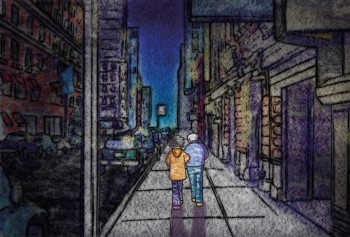 The program ended with Candy’s latest film, The Last Time, which is a memorial to her close friend and working partner since 1973, Vince Cafarelli. Although it wasn’t a Perpetual product, it celebrated the end result of that studio as Perpetual merged into Buzzco with Buzz Potamkin, Candy and Vinnie continued on after Hal Silvermintz moved to open his own studio. After Buzz moved on Candy and Vinnie continued on with the studio which remains open and busy to this day. The film is sad, but it proved to be a positive ending to the evening. look for the spanking new short on the festival circuit.Go to its Facebook page to see a clip. Candy & Rick are appropriately proud of the short.
The program ended with Candy’s latest film, The Last Time, which is a memorial to her close friend and working partner since 1973, Vince Cafarelli. Although it wasn’t a Perpetual product, it celebrated the end result of that studio as Perpetual merged into Buzzco with Buzz Potamkin, Candy and Vinnie continued on after Hal Silvermintz moved to open his own studio. After Buzz moved on Candy and Vinnie continued on with the studio which remains open and busy to this day. The film is sad, but it proved to be a positive ending to the evening. look for the spanking new short on the festival circuit.Go to its Facebook page to see a clip. Candy & Rick are appropriately proud of the short.
Here are some stills I took last night:
 1
1The theater where the show took place.
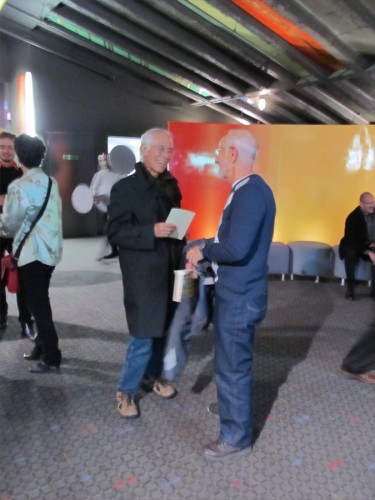
Mordicai Gerstein and Wayne Becker chat in the lobby.
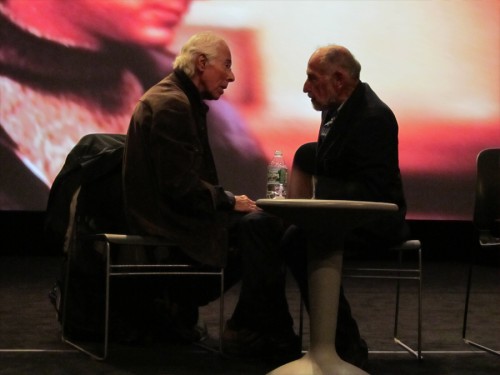 3
3
Mordicai Gerstein and Don Duga say hi on stage before the show.
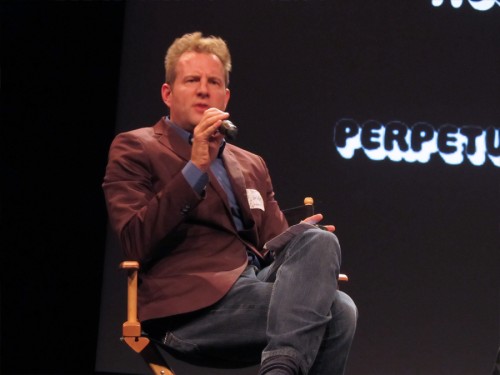 4
4
Tom Warburton moderated the panel on stage.
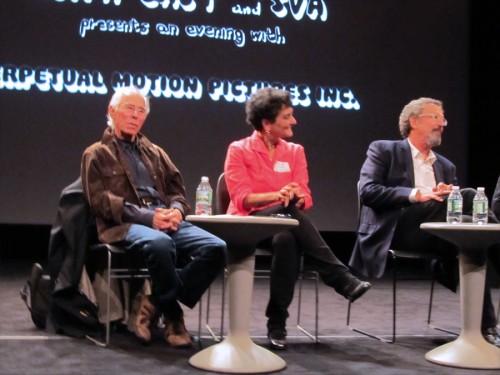 5
5
(LtoR) Mordi Gerstein, Candy Kugel, Thomas Schlamme
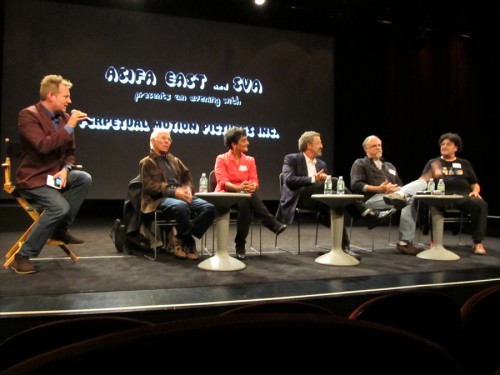 6
6
(LtoR) Tom Warburton, Mordi Gerstein, Candy Kugel,
Thomas Schlamme, JJ Sedelmaier, and Russell Calabrese
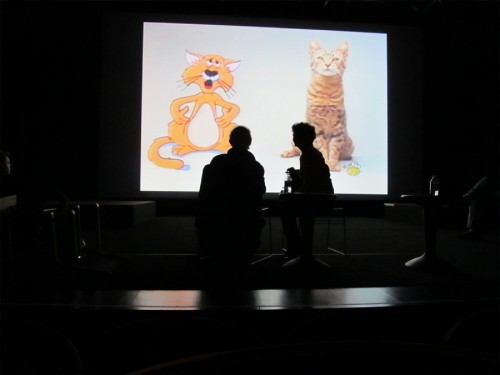 7
7
Mordi Gerstein and Candy Kugel remain on stage during the
opening filmmontage constructed by Richard O’Connor for the show.
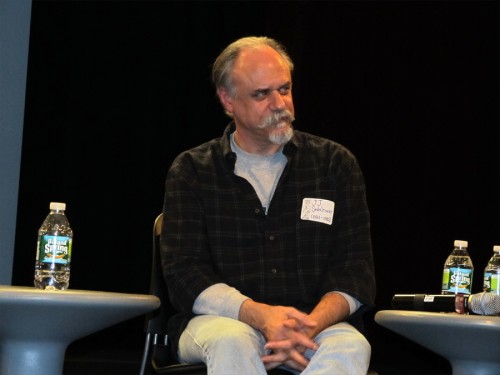 9
9
JJ Sedelmaier listens to the conversation.
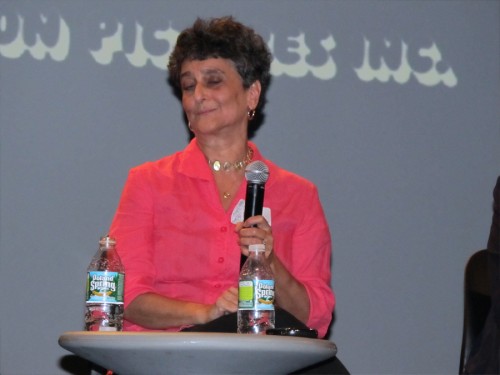 10
10
Sorry Candy. It’s a good closeup even though
my cursed camera caught you with eyes closed.
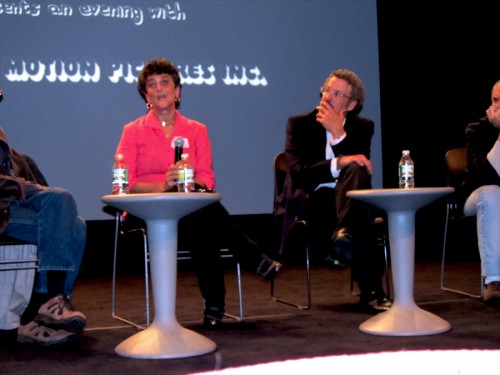 11
11
Candy and Thomas Schlamme remember.
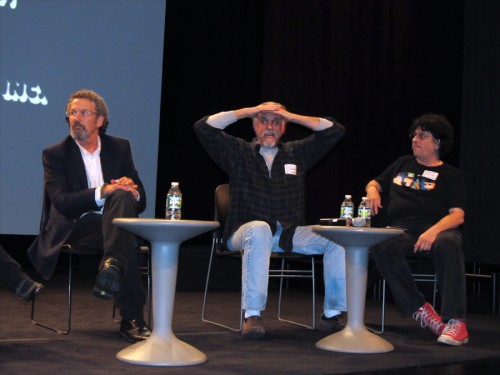 12
12
Tommie Schlamme, JJ looking out and Russell Calabrese.
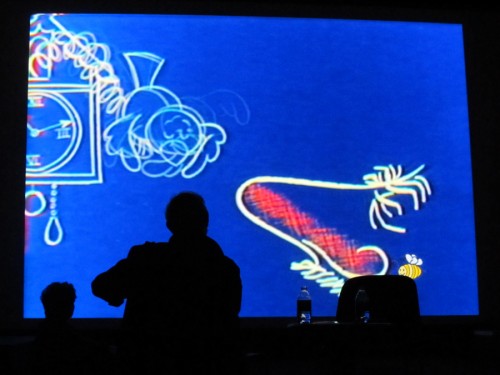 13
13
Mordi Gerstein watches some commercials
which he designed many years ago.
Animation &Animation Artifacts &Richard Williams 08 Oct 2012 07:24 am
Gramps – anew
- I have the CU drawings done by Richard Williams for a small scene from Raggedy Ann & Andy. I had thought the original animation was done by Spencer Peel, though I’m not sure. The drafts seem to credit Gerry Chiniquy.
For the first half of the film, Dick spent much of the film holed up while assisting and inbetweening many of the animators at the film’s start. In doing this, he was also able to rework and retime the animation and, thus, have control over it all. Once Dick became involved in a scene, it’s hard to say who animated it.
The problem was that the director has bigger things to do that affect the big picture.
This scene, beautifully cleaned up, is typical of these playroom scenes. And yet, as far as I can tell this was eliminated from the final film. I don’t have time to check the actual film, but the drafts indicate that scene 2.1 / 16 was taken out of the movie. I’ll look at the film just to make sure, but it looks pretty certain to me.
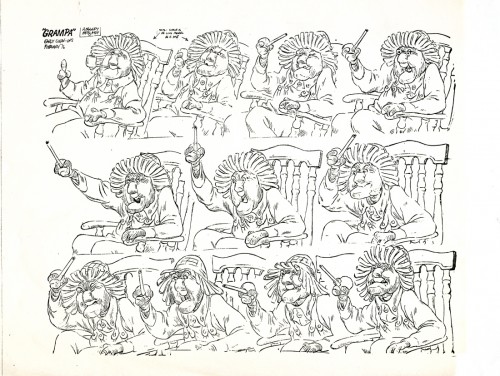
This is a model sheet taken from a similar scene in Raggedy Ann.
It’s obvious that his POV has shifted from left to right, and that may be
the reason for eliminating the scene pictured below.
The scene started out with 32 drawings, but it seems that Dick eliminated three of them (27-29) to hit an accent a bit harder than was done in the original animation.
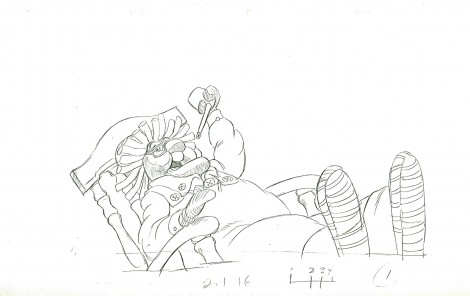 1
1
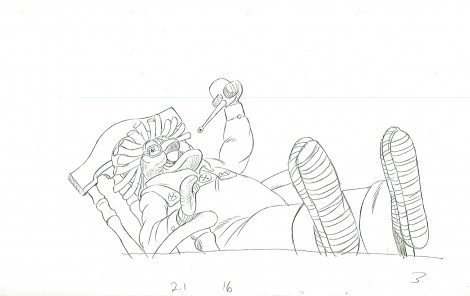 3
3
Dick had a unique animation and cleanup style. He would draw
his drawings incredibly light going quickly through the entire scene.
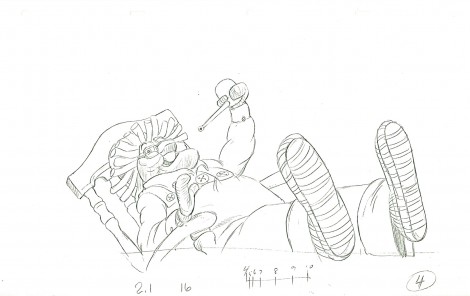 4
4
The pencil line of that first round was almost invisible.
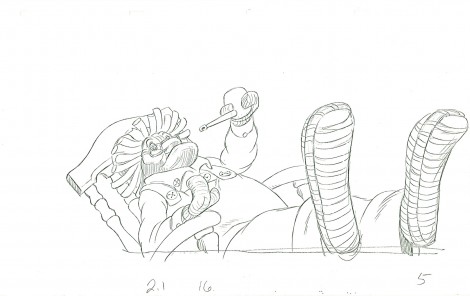 5
5
Then he’d go back and work over those lines
just as lightly and just as quickly.
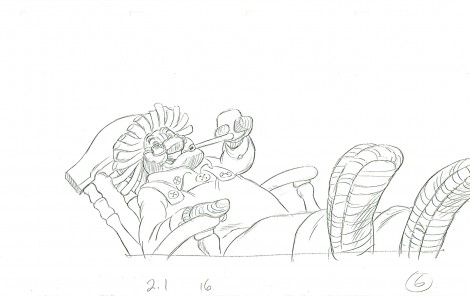 6
6
then he’d do it again, and again, and again.
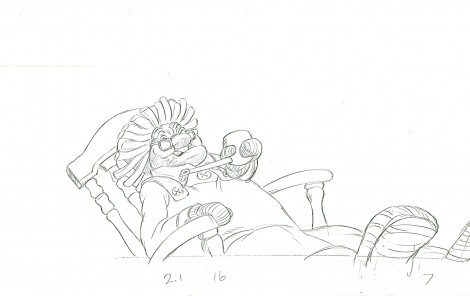 7
7
This gave him the opportunity of changing and adjusting as he went along.
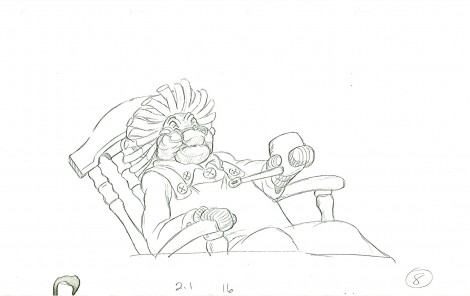 8
8
It also is a method somewhat similar to the one
that Tytla and Ferguson used in the 1930s. They’d
go for the “forces” and then go back and build up from there.
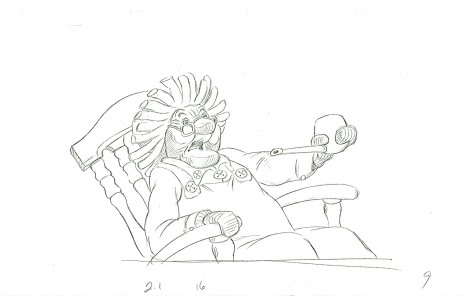 9
9
Williams used his light pencil lines to build up around his forces.
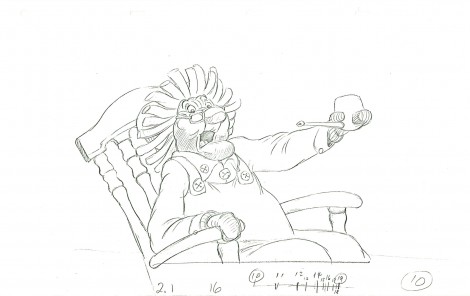 10
10
Oddly the animation style is unlike Tytla and Ferguson and
more like the tight constructed, planned style of Babbitt.
________________________
Here’s a QT of the cycle with a mix of one’s and two’s.
Articles on Animation &Richard Williams &Tissa David 01 Oct 2012 06:37 am
Raggedy Ann and Andy
- On Tuesday, October 23rd a memorial service for Tissa David will be held at the Lighthouse Academy Theater at 111 East 59th Street. It will begin punctually at 7pm. Seats will be available on a first-come first-served basis. To continue celebration of Tissa’s work, here’s an article that appeared in Cartoonist Profiles Magazine, No.33, March 1977. No writer’s name is credited.
We thank Mike Hutner. of Twentieth Century-Fox, for the production notes about this new full-length animated film, RAGGEDY ANN & ANDY, which is having its world-premiere in New York on March 20th.
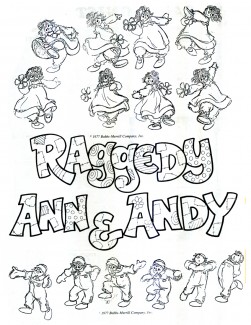 Raggedy Ann is a caricature of a rag doll, with stringy red hair, button eyes and a painted triangular nose.
Raggedy Ann is a caricature of a rag doll, with stringy red hair, button eyes and a painted triangular nose.
Harold Geneen is the Chairman of the Board of the ITT Corporation, an industrial empire which includes hotel chains, construction companies, the Bobbs-Mcrrill book publishing house and a car rental lirm which tries harder.
It was hardly destined that they would be linked in one of the year’s most ambitious entertainment ventures. But the proof is on 35mm Panavision film, in the form of “Raggedy Ann and Andy,” the feature-length animated musical from 20th Century Fox.
The genesis of the full-length am mated musical—one of the few such projects attempted during the past few decades without the Disney insignia—is a story which has its own touches of fantasy. In addition to ITT’s Board Chairman, the principals include:
• A team of Broadway theatre-owners and producers, who never before made a movie, lei alone an animated feature.
• An Emmy-winning composer, one of whose songs was a hit for both “Kermit the Frog” and Frank Sinatra.
• An Academy Award winning director who thought he was out of the picture until he look part in an all-night jam session at his Soho studio.
• Several legendary cartoonists, including the originator of “Betty Boop” and the man who gave Disney—and the rest of America—the beloved “Goofy.”
How they came to join forces really begins in Silvermine, Conn, in the early 1900′s. when newspaper cartoonist John Gruelle took a few minutes away from his drawing board to help his daughter fix a discarded rag doll. The toy was named “Raggedy Ann” by combining characters from two poems by James Whitcomb Riley — The Rag Man and Orphan Annie.
When Marcella Gruelle became desperately ill, her father sat by her bedside, making up stories about the doll’s adventures after everyone in the house was asleep. Marcella died on March 21st, 1916. after which her father determined to share with the world the stories he had not had time to tell her.
By the early 1970′s. Raggedy Ann was part of American folklore, a character whose exploits had sold some 80 million books and hundreds of millions of toys and games. That was when Lester Osterman. a former stockbroker who brought Sammy Davis Jr. to Broadway in “Mr. Wonderful.” and Richard Horner an ex-actor who had appeared in the Oberammergau “Passion Play” became involved. The producers of such Broadway successes as “Butley” and “Hadrian the Seventh,” they had just completed a live-action television special for the Hallmark Hall of Fame, based on the children’s classic. “The Littlest Angel.” Now they were searching for a similar property . . . for the same showcase.
A casual lunch with a merchandiser of children’s toys proved crucial. “Would you believe that after all these years. ‘Raggedy Ann’ is -.till one of the biggest sellers?” inquired the friend rhetorically. Within a few days. Osterman and Horner were on the doorstep of the Bobbs-Merrill Company, which publishes the “Raggedy Ann” stories, requesting development rights to the character.
An equally informal meeting with Joe Raposo. Emmy-winning composer-conductor of “Sesame Street,” brought music to the project. Horner and Osterman found themselves seated with Raposo at a Friars’ Roast for Johnny Carson. Somewhere between the broiled chicken and dessert, Raposo agreed lo score the “Raggedy Ann” tales.
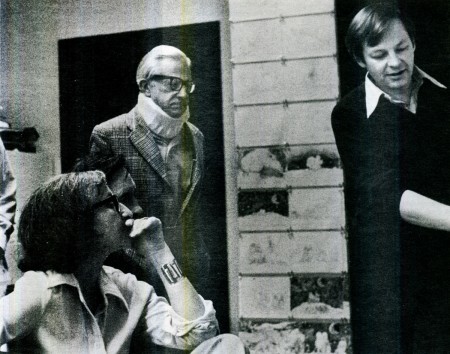
Animators Tissa David and Art Babbitt with director Dick Williams.
Next to join the troupe were writers Max Wilk and Pat Thackeray. True to Gruelle’s imagination, they created a fantasy world in which toys spring joyously to life. When Raggedy Ann discovers that the pixieish French doll, Babette, has been kidnapped by a pirate known as Captain Contagious, they set out to free her. That takes them into the “deep dark woods”, inhabited by such personalities as the “Looney King,” “the camel with the wrinkled knees” (one of Gruelle’s personal favorites) and the “Greedy,” a kind of confectionery version of the La Brea Tarpits. “We thought we were writing a live television special,” recalls Ms. Thackeray. “So much so that we began casting Raggedy Ann in our minds, alternating between personalities like Liza Minnelli and Goldie Hawn.”
But Raposo was having second thoughts. “It won’t work,” he finally admiitted. “Put a red fright wig and a painted mouth on an actress— any actress—and do you know what you’ll have? A circus clown.”
The obvious alternative was a full-length animated musical cartoon. Which is like saying the obvious alternative to your reliable family car is to go out and buy a Rolls Royce. There is a reason, as director Richard Williams would later point out, why animated features are almost exclusively the province of the Disney organization. “And even Disney turns out several live comedies and nature films for every animated movie.” Williams notes.
To create 90 minutes or more of full animation (as opposed to the jittery short-cuts of television cartooning) requires more than one million preliminary and final drawings. From inception to “answer print” lakes three years or more. “And the cost,” adds Williams, “is tremendous.”
“Since the Hallmark people had discussed a live musical, they were perfectly justified in walking away from a more costly animated feature,” says Horner. The producers now had a cartoon without a cartoonist, a television special without a sponsor, and a project without investors. But it was no time to think small. Why settle for a television special? Why not make “Raggedy Ann and Andy” as a movie?
It was back to Bobbs-Merrill with the suggestion that Osierman-Horner and the publishing house become partners in the proposed film. That, the publishing executives said, was up to their parent company, ITT. A meeting was arranged with Board Chairman Geneen. which developed into a corporate backers audition.
Pat Thackeray later described the “incredible afternoon” to author and critic John Canemaker, whose book, “The Animated ‘Raggedy Ann and Andy’-The Story Behind Ihe Movie,” will be published at the same time as the 20th Century Fox release.
“Geneen came into the room, asking questions, his mind like a laser,” she said. “He remembered a stage version of ‘Raggedy Ann’ he’d enjoyed as a youngster, in the I920′s. We made our presentation. Then, as we were going down in the elevator, a guard told me, ‘I don’t know who you are but you’ve got it made.’
“I asked why.
“The guard said, ‘Because the old man stuck his head out of the door and asked what I thought of the music coming from his office. I said it sounded pretty good to me. That wasn’t just good, Harry,’ he said, ‘that was terrific.’”
With financial backing assured, the next problem was simple. Who would draw the million-plus pictures which would make up the finished movie? And who would piece them all together with wit and style?
Firsl choice was Richard Williams, the Canadian-born, London based head of his own animation studio who had won an Academy Award for “A Christmas Carol” and a host of admirers for the “Return of the Pink Panther.” Despite a commitment to his own project, “The Thief and the Cobbler” Williams listened to Raposo’s score, and said yes.
“But my business manager said ‘no,’” Williams recalled. “Or to put it more accurately. he priced my services so high, there was no way the picture could have come in on budget.” What happened to the business manager? “He’s not with me anymore,” Williams replied with British sang-froid.
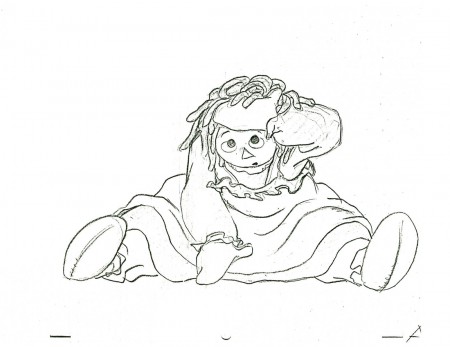
Tissa David’s rag doll
Osterman and Horner began negotiations with a New York cartoon “factory” which specialized in limited animation for television. Within a short period (according to Canemaker), the newcomers had virtually thrown away the Wilk-Thackeray script, replacing Gruelle’s characters with a “Love Fairy” and a “Cookie Giant.” Outraged. Raposo walked out of a story conference (“before 1 threw up from all that treacle,” he recalls) and caught a plane to London to make a last-ditch attempt at hiring Williams.
Discovering a shared taste in jazz, the two men opened a bottle of Scotch and during an impromptu jam session, past misunderstandings vanished in a vapor of 12-year-old malt and good will. The animated movie finally had an animator.
It was Williams who formulated the approach to the picture. “Disney’s contribution to animation is colossal,” he said. “The technique of bringing a cartoon character to life would slill be in the dark ages without Disnev. But to copy the ‘look’ of his films would have been disastrous.
“Instead, 1 said, ‘let’s be as rich and lush as Disney in a totally different style … in the style of Johnny Gruelle.’”
A remarkable team of animators was assembled in New York and Hollywood lo carry out that mission. Included were several men and women who can legitimately be termed ‘living legends’ in the field of motion picture cartooning.
There was Grim Natwick, a spry octogenarian, who had designed the first of the “Betty Boop” pictures for producer Max Fleischer in the thirties and animated the majority of Snow White’s scenes for Disney. Another Disney veteran was Art Babbitt, the co-creator of “Goofy” and the dancing mushrooms in “Fantasia,” whose verbal donnybrooks with Disney during the I940′s had been peppery Hollywood gossip.
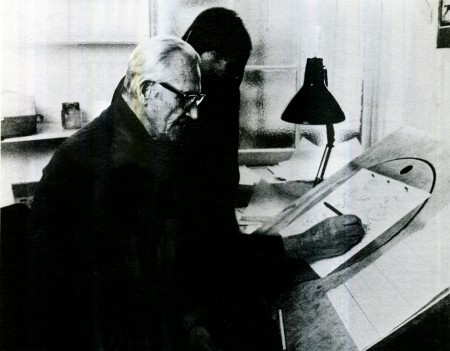
85 year old animator Grim Natwick
with young animator Crystal Russell
To draw the “Greedy,” a ‘monster’ made of whipped cream, cherry banana taffy, chocolate fudge and other sugary delights. Emory Hawkins—a veteran of Disney as well as the MOM and Warner Brothers cartoon studios -was summoned from his New Mexico ranch. “Raggedy Ann” herself was drawn by Tissa David, a Transylvanian-born artist who had worked with Natwick at UPA Productions during the heyday of “Mr. Magoo” and “Gerald McBoing Boing.”
From Canada came Gerald Potterton, head of his own animation studio. whose credits include the Peabody Award winning “Pinter People” and key sequences in the Beatles’ “Yellow Submarine.” The design of the vital storyboards and layouts which gave the picture its graphics stamp was up to Cornelius “Corny” Cole, both an animator and a renowned painter.
The musical routines for the “Twin Penny Dolls,” whose movements are perfectly synchronized with each other, were drawn by Gerry Chiniquy. who looks like Gene Kelly and specializes in “dance animation.” During a ten year period at the Warner Brothers Studios, whenever Bugs Bunny or Daffy Duck were called on to trip the light fantastic, Chiniquy got the nod.
Soon, the sketches began mounting—at the unit’s bustling New York headquarters (which are wag dubbed “Raggedy Ann East”), a California studio and director Williams’ home base in London. Williams’ job was clearly defined.
“I was in charge of catching airplanes,” he laughed. Spending ten days to two weeks in each city, Williams would check the work of dozens of illustrators, pencil in his own suggestions, hold story conferences, review preliminary sound-track recordings, analyze the “Leica Reel” (a rough compilation of the motion picture in progress, pieced together as new drawings and backgrounds were added “like a jigsaw puzzle”), then rush to the airport.
“I became one of the world’s great authorities on jet lag,” he added.
Choosing the voices of Captain Contagious, Suzy Pincushion, the zany “Gazooks” and other denizens of Raggedy Ann’s fantasy world became a crucial problem. Tradition says the voices for a feature-length cartoon should be box-office names whose unseen presence will enhance the picture’s publicity and promotion. Raposo and Williams chose to defy tradition, backed by co-producer Horner. “We were treating the picture as a big, lavish Broadway musical—in the form of an animated cartoon—so we looked to Broadwav for vocally gifted actors,” said Raposo. Casting sessions were held in a New York studio, where hundreds of performers went through their paces.
“I knew the long hours were getting to me when 1 walked through the hall, outside the studio, and saw a man reading our script, who really looked like a camel,” said Williams. Ironically, the actor was dour-faced Fred Stuthman, who eventually did provide the voice for the “Camel With the Wrinkled Knees.”
Another actor’s reaction set the whimsical tone of the casting sessions.
“You want me to play what?” said Joe Silver, veteran of such movies as “The Apprenticeship of Duddy Kravitz”, in utter disbelief.
“An enormous pit of taffy, filled with gum-drops and maraschino cherries and covered with chocolate sauce,” answered casting director Howard Feuer.
“Is this a gag?” asked Silver. He was quickly persuaded it was not and even more quicklv rose to the chocolate covered challenge.
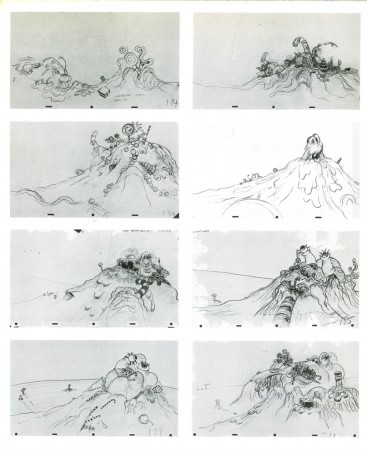
Emory Hawkins Taffy Pit
Virtually all of the “Raggedy Ann and Andy” voices are better known to their peers than to the general public. Included are Didi Conn of the television series, “The Practice.” whose voice has been likened to that of a “sexy frog” as Raggedy Ann: Mark Baker, co-star of Leonard Bernstein’s “Candide” as Andy: Allan Sues from “Laugh-In.” Arnold Stang, Mason Adams and George S. Irving. The “sockworm” is vocally portrayed by a man with more impressive credentials in another phase of show business—Sheldon Harnick, lyricist of “Fiddler on the Roof.”
Only one performer is seen on film, during an introductory sequence about Marcella Gruelle. Casting the role, director Williams, recalls, was a thorny problem. “I needed a little girl on whom 1 could impose a 12 hour work day, to stay within schedule.” Rather than face some other lot’s outraged parents, he elected his own six-year-old daughter, Claire. “My presence made it a kind of game for her.” he adds.
Meanwhile, the pressure at Raggedy Ann East. Raggedy Ann West and the London base was mounting. Williams and his associates had promised a finished movie to Bobbs-Merrill in time for the film to be launched nationally by Easter, 1977. The million-plus drawings had been completed, and now the inkers, opaquers, “in betweeners,” and other technical craftsmen, vital to an animated movie, were working double and triple shifts, to meet the deadline.
The only rule, Williams paradoxically demanded as he fired memos to the tripartite staff (“usually dictated somewhere over Kansas,”) was that there must be no compromise in quality. Typical of the fine detail necessary to achieve “full animation” was an incident which occurred in the office of veteran supervisor Marlene Robinson. An “inbetweener”-responsible for linking the animators’ drawings, frame by frame—was frustrated. Several strands of Raggedy Ann’s hair refused to move in rhythm with the rest of the character.
The next hour was devoted to re-drawing the wisps of hair, over and over, until there was perfect synchronization.
“It seems like such a little thing,” Ms. Robinson said afterward. “But blown up to Panavision size, anything which distracts the eye of the moviegoer—shapes that vary, colors that fade, even a recalcitrant strand of hair, is enough to destroy the ‘illusion.’”
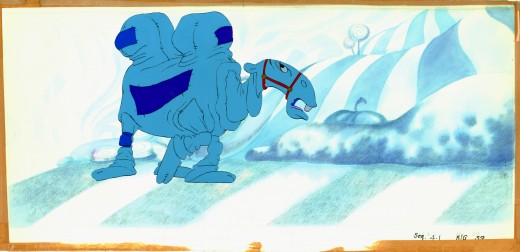
Babbitt’s “Camel with the wrinkled knees”
In another room, Cosmo Pepe, working with complex equipment designed by cameraman Al Rezek, was transferring the drawings onto sheets of transparent celluloid—by shooting 13.000 volts of electricity through them-prior to putting them through a Xerox enlarger. “We developed a special toner, for the enlargements, to Dick Williams’ specifications,” Pepe revealed. “The toning is vitally important: it affects the way the characters stand out on the big screen. The formula for this toner is as closely guarded as a three star chefs award winning recipe.”
By the lime “Raggedy Ann and Andy” was completed, and ready for release by 20lh Century Fox more than five years had passed from the date on which Osterman and Horner first solicited the rights from Bobbs-Merrill. More than two years had been spent in production.
Richard Williams summed up the feelings of everyone involved by quoting Johnny Gruelle. “It does pay to do more work than you are paid for, after all,” Gruelle once told an interviewer. “Someone, somewhere, sometime will see it and appreciate it.”
Commentary 22 Sep 2012 06:53 am
Criticeria
- It appears that a number of animated features will be opening shortly. There’s a screening in NY this morning of Hotel Transylvania. It’s at the Museum of the Moving Image in Queens. That’s a long enough trip to keep me from going. I’ll see it another time; the ad keeps me uninterested. It opens next friday, Sept 28th.
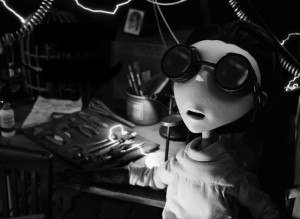 The Academy will screen Tim Burton’s Frankenweenie on October 11th, a week after it opens in theaters. I’ll see it there, in comfortable surroundings.
The Academy will screen Tim Burton’s Frankenweenie on October 11th, a week after it opens in theaters. I’ll see it there, in comfortable surroundings.
There’s an article about Tim Burton in today’s NYTimes.
Wreck It Ralph opens November 5th. Can’t wait.
There’s no real incentive for me to see any of these films except that they’ll all be entered into the Oscar race, and to vote I’ll have to see them all. The more I can see now, the fewer I’ll have to see in that crushing two weeks at the end of the year. That’s when all of the entered films have to be viewed. It’ll be something like 16 films in two weeks to absorb. Talk about impaired judgment.
The contenders for animation short will be screened n NY on Saturday, Oct. 27th. That’ll start at 10am and probably go straight through to about 6 or 7pm. Your eyes are melting by the time you get out of there, with maybe one or, at the most, two good films in the bunch.
I still look forward to it all.
My World and Welcome To It
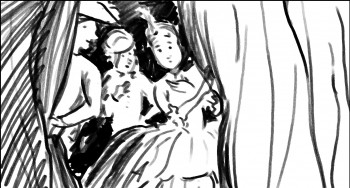 - Meanwhile, Heidi, my wife, says my world is all about politics and movies. She’s wrong; baseball is high in there as well. This time of the year, particularly an election year like this, I only want to watch talking heads on TV (and The Good Wife and Treme and Boardwalk Empire.)
- Meanwhile, Heidi, my wife, says my world is all about politics and movies. She’s wrong; baseball is high in there as well. This time of the year, particularly an election year like this, I only want to watch talking heads on TV (and The Good Wife and Treme and Boardwalk Empire.)
Actually, I don’t think about much of this. I do think about POE and the scenes I’ve been anmating over and over and over. The style is a bit funky and I keep reworking it. I have four scenes done, and I keep expecting more of myself, so I keep redoing them. If I’d been doing it on cel with an animation camera, the first version would have been the final. But using a computer means I can rework the damn thing a hundred times or more. It’s fun though. I want to have the thing down pat before I really get into it. Once the real “Go” is there it means Go.
By the way, the title, My World and Welcome To It, of course, comes from that great series from 1969 which starred William Windom as a James Thurber-like cartoonist whose animated imaginings filled the screen throughout the show. I was in Alaska in the Navy when it aired in the lower 49. I might have been able to see Russia from my house, but the TV didn’t run this series. My sister talked about it in her letters and I did a lot of catching up when I got home.
I was reminded of the show recently when Windom died in early August. I was a fan of his before that series, and I became more of a fan after the series.
Robert Dranko was the animation art director and producer for the series and
Bob Richardson was the animation director.
Ottawa
 - The Ottawa International Animation Festival began this past Wednesday. I’ve always felt close to this Fest. Having gone to the first half dozen versions of this event, where I learned so much about International film and the job of selling movies, that it naturally formed a soft spot for me. With sadness and regret, I couldn’t make it up to attend in person. However, I do keep my eyes open to see what’s happening there and what I’m missing. Richard O’Connor, through his site, Ace and Son, has always been a source of information that’s been invaluable to me. This year Richard helped open the first program by presenting a reel of short clips and an articulate eulogy for Tissa David. On his report of the first day of the Fest, he posts a video clip showing his comments during that program. You can check in daily for his comments.
- The Ottawa International Animation Festival began this past Wednesday. I’ve always felt close to this Fest. Having gone to the first half dozen versions of this event, where I learned so much about International film and the job of selling movies, that it naturally formed a soft spot for me. With sadness and regret, I couldn’t make it up to attend in person. However, I do keep my eyes open to see what’s happening there and what I’m missing. Richard O’Connor, through his site, Ace and Son, has always been a source of information that’s been invaluable to me. This year Richard helped open the first program by presenting a reel of short clips and an articulate eulogy for Tissa David. On his report of the first day of the Fest, he posts a video clip showing his comments during that program. You can check in daily for his comments.
Memorial
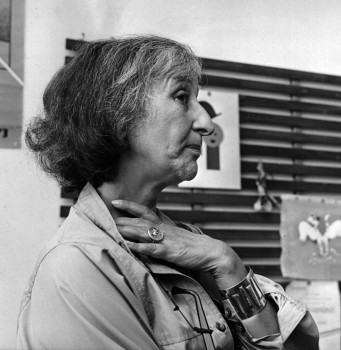
- Meanwhile the NY memorial for Tissa David is coming along nicely. It will definitely take place at 7pm on October 23rd at the MP Academy screening room at the Lighthouse at 111 East 59th Street. The theater is downstairs. It may be crowded and first come first seated.
There will be five speakers and lots of film clips.
I intend to screen at least one or two complete films, but time may nix that plan.
The films to be screened come from four studios:
- . the Hubley studio – EGGS, COCKABOODY, EVERYBODY RIDES THE CAROUSEL and possibly a commercial or three
. the Ink Tank/R.O.Blechman – THE SOLDIER’S TALE, CANDIDE promotional film, a commercial or two
. Raggedy Ann and Andy – “Candy Hearts and Paper Flowers” sequence
. and my studio – THE RED SHOES, THE DANCING FROG and THE MARZIPAN PIG (of course).
There’s also a nice surprise which will start the evening and the program.
It should be excellent.
Let’s Celebrate The Tune
- There was an article about Bill Plympton in last week’s The Onion. No it wasn’t a joke, it was a fine article in the AV Club section of the paper. This is a good article by Tasha Robinson and is worth the read. It basically celebrates the one-man-feature idea of The Tune done in 1997. He was a pioneer, I have to hand it to him. Worth the read.
Commentary 25 Aug 2012 05:56 am
Commentary Times
Tissa David‘s nephew, Mate Hidvegi, sent me a number of excellent photos of Tissa, which were shot in this past year. I’d like to share a couple of the pictures Mr. Hidvegi has shared with me.

Tissa, greeting visitors as they get off the elevator. May 2012
This is exactly how I remember and will remember her.
A perfect photo.

Tissa’s good friend, artist Judith Reigl, drew this portrait
of Tissa in 1942. (Owned by Tissa’s sister, Katalin David.)
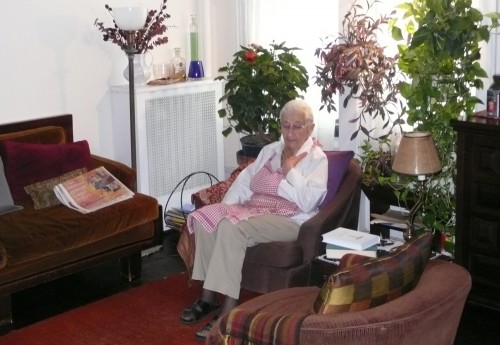
Tissa, sitting in her living room, May 2012
This is an amazingly beautiful photo.
Enlarge it for the full picture which is exact and accurate in its colors.
Years ago, I remember sitting through Fantasia at a private screening in John Canemaker‘s apartment. This was before the days of home video or dvd. John had secured a beautiful 16mm print for the occasion. This film was seminal to John’s life and spirit; I knew that and I suspect that Tissa also knew it. I’d also seen the film about 20 times in the year prior to that screening; it had just been re-released in NY for the first time in many years. I felt that the film had some of the greatest work of the Disney artists, and I also felt that it had some enormous lows.
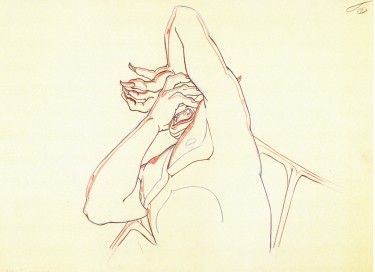 At the end of the film, Tissa immediately piped up and proclaimed it a horrible movie. (John used to impersonate Tissa’s comment for years after, and it always brought a laugh.) She was overstating her thoughts, obviously, but for comedic effect. She hated the Pastoral and other kitschy parts of the film, but she undoubtedly loved the brilliance of Bill Tytla‘s devil or the strength of Reitherman‘s dinosaurs. Even the excellence of Kimball’s Bacchus couldn’t be denied. However, the overall effect was questionable, especially in that apartment screening where it wasn’t the overblown big screen and stereophonic sound version, and its flaws were more obvious.
At the end of the film, Tissa immediately piped up and proclaimed it a horrible movie. (John used to impersonate Tissa’s comment for years after, and it always brought a laugh.) She was overstating her thoughts, obviously, but for comedic effect. She hated the Pastoral and other kitschy parts of the film, but she undoubtedly loved the brilliance of Bill Tytla‘s devil or the strength of Reitherman‘s dinosaurs. Even the excellence of Kimball’s Bacchus couldn’t be denied. However, the overall effect was questionable, especially in that apartment screening where it wasn’t the overblown big screen and stereophonic sound version, and its flaws were more obvious.
Tissa blew the same trumpet on many other Disney features. There was a Museum of Modern Art screening of Jungle Book with Eric Larson, Ken Anderson and Gilda Ratner present to talk. I had all I could do to stay awake during the film. (Those horrible voices – Phil Harris, please!) Finally, it ended, and Tissa whispered the opinion, “What a dreadful movie!” I could only laugh. I thought I was the only one with that opinion, and she was voicing my thoughts (and covering up the fact that I slept through it.) We laughed together.
She absolutely loved Frank Thomas’ squirrel sequence from Sword in the Stone.As a matter pf fact, she had a soft spot for a number of Thomas’ sequences.She also loved Marc Davis’ work. His Cruella de Ville certainly stood out. Tissa surprised me during Beauty and the Beast when she praised a half shot of Belle walking and said it was a good walk. (This was within the castle while a prisoner of the beast.) You couldn’t see Belle’s feet, but Tissa believed it. This was high praise from her. By then I’d been concentrating more on the direction than the animation, so I was glad she caught me not paying attention to the screen action. She woke me up again, in a different way this time.
There were many gems Tissa praised to the hilt. The first time we saw Caroline Leaf‘s film, The Street she was full of superlatives. Tissa was a judge in Ottawa when Norshtein‘s Tale of Tales won Best in Show, and it deserved it. We sat through that film many times together. We both loved it. The Quay Brothers confused much of the audience that year with their early film, Nocturna Artificialia, but she loved it. Sodid I, and we spent a lunch talking about it.
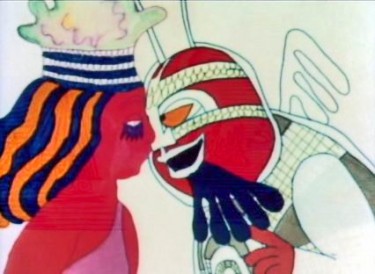 In 1974, she opted not to work on the Hubley film, Voyage to Next (she never told me the reason though I believe it was because John was lowering her salary considerably – he had so little money on this film – and she had to stand up for herself), but she praised, privately to me, the animation of Bill Littlejohn even though she wasn’t crazy about the final film.
In 1974, she opted not to work on the Hubley film, Voyage to Next (she never told me the reason though I believe it was because John was lowering her salary considerably – he had so little money on this film – and she had to stand up for herself), but she praised, privately to me, the animation of Bill Littlejohn even though she wasn’t crazy about the final film.
She shared a long list of things she didn’t like in her own work on films like Eggs, and Raggedy Ann. She also loved working on both films, and loved working for both directors – John Hubley and Dick Williams. After working on animation for Candide for Bob Blechman – low salary long hours and difficult but beautiful work – she told me privately that she would not work on any more films for Bob. She hated how the studio had reworked her animation and changed the cutting. She felt all her hard work had been damaged.
In short, I learned from Tissa that I should trust my judgement. I also used judicious thought in airing my opinion; I was always concerned about hurting the feelings of others. Tissa showed me that I had a strong and contrary opinion, but really I was just looking for my idea of quality. It was easy to say how much I liked things I didn’t, but it was hard to speak the truth and tried to articulate why. It isn’t always easy, but it’s certainly necessary for me. I suppose that makes me not always liked within the community, but the art of animation is too important for me. If my honest opinion gets someone to do better, it’s worth it.
Not too long ago an award winner at an animation festival offended me. At the after party, I told the film maker that his half of a walk cycle was an unforgivable cheat. The budget was the excuse that didn’t sit with me, and I stupidly hurt the animator/director. He hasn’t done half a walk cycle again, and I think my rudeness paid off. Especially in that he’s a gifted artist, and his work was better than what he offered us – even winning an award.
Tissa’s unforgiving critiques of my work, and there were many of them – many – over the years was always helpful. Every single comment from her, whether about my work or other people’s work, taught me something. The positives meant so much more because the negatives were just as honest. I’ll miss her barbs and her lessons. However, I have to say my own opinion of my work is more critical than she ever could have been. I just don’t have a second voice to back me up anymore, and I seriously miss that.
UPA Production Numbers
- Following in the lead of Thad Komorowski‘s listing of production numbers from M-G-M and Warner Bros cartoons, Adam Abraham has opted to add all Production Numbers, he has for the UPA films. This list is complete to about 1956 and includes all the Columbia shorts.
This site, When Magoo Flew, is not only a good companion to the book but is excellent and informative in its own rite. There’s plenty of information here that doesn’t even appear in the book.
Paul Rand . . . I mean Ayn Ryan
- For all those psychotic Paul Ryan lovers, Ayn Rand‘s The Fountainhead will be broadcast on TCM on Sunday, August 26 at 02:30 AM.
This gave me one of my favorite moments as an Academy member. It was a memorial service for Gary Cooper, who had died way back in 1961. They had clips from a number of his great films and a number of speakers who were part of his life (or he was part of their lives.) It was moving smoothly when Patricia Neal came to the microphone, dressed in a bright, slinky, crimson dress. She gave a short-ish speec which started with,”
“Gary Cooper was the love of my life.”
She revealed something that was obvious to many at the time. She and Cooper, while filming The Fountainhead, fell in love. Cooper was married and loved his wife. He would not leave his wife and child for Patricia Neal on her first film. The affair turned to an end. Neal was brokenhearted and told us, many years after. She told us she still loved Gary Cooper. It was a very emotional speech.
They followed with a clip from The Fountainhead.
Maria Cooper, Gary Cooper’s daughter, followed the clip and didn’t talk about Patricia Neal.
Olympiad Twenty
I’ve received a notice about the following animated short pieces geared to the Olympics. (Better late than never.) They’re very short animated clips that lead one into another. The note that came with the email read as follows:
- We’ve just made a series of 7 x 20 second animations in just two weeks with
one animator, which is getting really good feedback.
Wondered if you might like to see our animation and share it if you like?
Any feedback you can offer is most appreciated.
Kath Shackleton, Producer
Fettle Animation
Personally, I’m not the biggest fan of the material, however, I thought many of you would like them. The punchlines are consistently nasty and unpleasant, making the stories not very interesting to me. The animation seems excellent for Flash type work. A lot of labor went into them; I wish the writing had been more creative rather than nasty.
Please feel free to leave your comments for them; I’m sure many of you will like them more than I. It’s just my sentiment – my taste – in this period of world history.
Commentary 22 Aug 2012 08:03 am
Tissa David 1921-2012
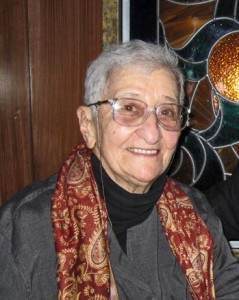
Tissa David was 91 last January.
Tissa David died last night.
In the past month, it was discovered that Tissa had a tumor which formed on her brain and was growing rapidly. She went home from the hospital, rather than experience a difficult operation, which she, at the age of 91, wouldn’t survive. It would be better to go out gracefully.
I visited her several times a week, if I could. Our conversations amounted to my being as cheerful as possible remembering as much as I could and discussing old friends and good times. I tried to sound as gossipy as I could, and Tissa enjoyed that. We also talked about animation: the mechanics of animation and different styles of animation. Her memory was clear as long as I was talking. When she tried to answer a question, the memory didn’t work, and Tissa would just say, “I don’t know. I don’t know.”
Last night, while I was out, her good friend and caretaker, Susan Davis, called leaving a message for me to return her call to Tissa’s apartment. I had intended to visit Tissa again today, Wednesday.
Tissa died yesterday evening, August 21st, in her Manhattan apartment at 7:35 PM.
To give some background information about Tissa David, I’m reposting this Millimeter article that John Canemaker wrote in 1975. I’ve added some to it.
- The 1975 issue of Millimeter Magazine is an animation issue. There are a number of enormously informative articles. I was rereading a copy of the magazine, this past weekend, when I came across the Close Up section, wherein a couple of bios appear.
I’d like to show one for Tissa David that was included. I assumed John Canemaker authored the piece; there is no byline. When I asked him, he responded thus: “I wrote the article on Tissa. The quotes are from my first formal interview with her. It was for Millimeter when I was the animation editor and put together special animation issues.”
Tissa looks so young in that photo.
-
“I am a frustrated comedienne, for sure,” Tissa David will tell you, only if you ask. “I am a clown. If I weren’t shy, I’d probably be on the stage.” Instead she is an animator, one of the world’s best and busiest, and one of the few women to have reached the top in the traditionally male-dominated animated cartoon field.
She joyfully toils in her East-Side New York apartment, a warm, plant-filled place that often smells of baked apples. Classical music swirls quietly from a radio and the glow cast from the light under her animation board gives her the look of a sorceress.
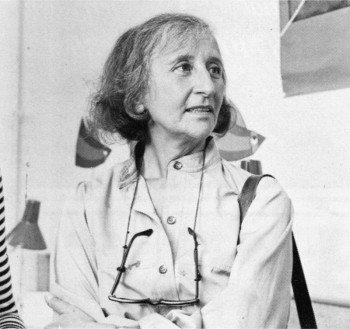 The lady has class—a fact one gathers upon first meeting, but a fact that is reaffirmed by catching a look at the creatures she is conjuring to life on her drawing board. The graphic line is strong and free, yet elegant (as is the artist); and when the drawings are flipped, the creatures move through their paces with a deliciously droll humor, a wit that is uniquely Tissa David’s.
The lady has class—a fact one gathers upon first meeting, but a fact that is reaffirmed by catching a look at the creatures she is conjuring to life on her drawing board. The graphic line is strong and free, yet elegant (as is the artist); and when the drawings are flipped, the creatures move through their paces with a deliciously droll humor, a wit that is uniquely Tissa David’s.
As a child in her native Hungary, Tissa saw Disney’s SNOW WHITE and thought (as so many others have thought after experiencing that film masterpiece), “Now this is something I want to do.” After graduating from art school, she became an assistant animator at Magyar Film Iroda in Budapest; a little more than a year later, in 1945, she was a co-owner of the Studio Mackassy and Trsi supervising all phases of production including story and camera and was sole animator of the puppet and cartoon films.
She left Hungary in 1950 during the height of the Stalin regime, and finally landed in Paris.
Jean Image Productions hired her in September 1951 and for two years she read sound tracks, planned layouts, animated, and did the entire editing of the feature-length, BONJOUR PARIS (1953). That studio closed and Tissa animated at La Comete next, a studio that had been Paul Grimault’s.
“I had absolutely no relatives outside of Hungary except in the United States. So I asked for a visa in 1950. It took at that time five years to get a visa, that was still the quota system. So I came to New York…I loved the U.P.A. cartoons. I decided I wanted to work in that studio.” In 1956, the United Productions of America’s New York Studio was the last tenant in a brownstone on Fifth Avenue and 53rd Street slated to be torn down for the construction of the 666 Tishman Building. There was a French girl in the UPA studio and so she introduced me,” Tissa recalls. “I had no sample reel. I went in once to make a sort of tryout. I was scared; I didn’t speak English, so I was just waiting, waiting, and Grim came by…Grim Natwick is the history of animation and I can rave about him. He created Betty Boop and animated the character of Snow White all the way through. UPA had an awful lot of work and they needed an assistant to Grim.”
At that initial meeting, Natwick boomed, “Now, you know what animation is!” Tissa quietly answered, “Animation is—animation.” Natwick laughed, “You can’t argue with that!” and thus began a professional partnership that lasted twelve years. “Isn’t it strange,” says Tissa today, “that SNOW WHITE got me into animation and I really learned my animation from Grim. I know a great deal about animation, I know I know, because even today I don’t do one line without something in my brain Grim told me.”
After UPA closed in 1958, Tissa and Grim freelanced as a team on countless TV commercials, and since Grim’s retirement, Tissa has soloed successfully and most notably on several John Hubley projects, i.s.: Of Demons and Men (1970), Eggs (1970), Children’s Television Workshop segments Cool Pool Fool, True Blue Sue, Truth Ruth and others, and Cockaboody (1973). Her latest animations include three CTW Letterman episodes, a scene in Shamus Culhane’s Noah’s Ark production, and over 110 feet of Hubley’s Bicentennial film, People, People, People. She has just completed some experimental animation fora Dick Williams project and is now starting, also for Hubley, a TV special based on Erik Erikson’s writings.
A description of Tissa David’s style of animation is difficult; for while it is a distillation of the Disney influence in timing, the UPA sense of humor-through-graphic-design, and the strong, poetic John Hubley mode, it also contains a different character, unique to Tissa David, that she calls the “female difference…If the same scene is animated by a man and by me, there will be a great difference, not in quality but in interpretation. John Hubley told me I have a fine sense for detail, not in the drawing itself because I make very loose drawings, but in a scene, in expressing feelings. I am a very intuitive animator—I never know when I sit down to work what will happen.”
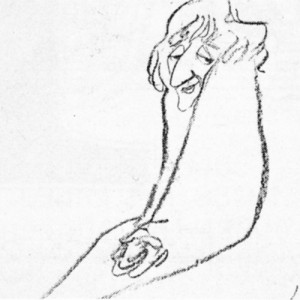 For all her gentleness, Tissa also contains an inner core of strength exhibited in her single-minded devotion to her art. Her opinions about that art, herself and other topics, is disarmingly to-the-point: “I believe very strongly that one must know how to draw,” she will offer on the subject of how-to-animate. “Even if you just animate objects, you must have a knowledge of drawing.” As for her struggles securing her place in animation, Tissa will admit, “…its very hard. Women can find work in animation if they have enough will to follow through and really do it. Even today, I’m always saying if I keep busy long enough, I will become a good animator.”
For all her gentleness, Tissa also contains an inner core of strength exhibited in her single-minded devotion to her art. Her opinions about that art, herself and other topics, is disarmingly to-the-point: “I believe very strongly that one must know how to draw,” she will offer on the subject of how-to-animate. “Even if you just animate objects, you must have a knowledge of drawing.” As for her struggles securing her place in animation, Tissa will admit, “…its very hard. Women can find work in animation if they have enough will to follow through and really do it. Even today, I’m always saying if I keep busy long enough, I will become a good animator.”
At the time this piece was written, Tissa was completing work on a pilot for Dick Williams’ film, Raggedy Ann & Andy; this one minute piece got Dick the film over Joe Oriolo and Shamus Culhane. She would thereafter work on John Hubley’s Doonsebury Special (just as he died mid film); and she was to animate for R.O.Blechman’s Simple Gifts.
Since that article was written, Tissa had animated a good part of The Soldier’s Tale for Bob Blechman. It won the EMMY Award. For me she worked on many of my half hour shows. The Marzipan Pig was made from her storyboard, and she animated the entire half hour film.
I’ll write a longer piece in a few days and will add some photographs.
Needless to say, this is very sad for me.
Animation &Commentary 07 Aug 2012 06:20 am
Jack Schnerk, again
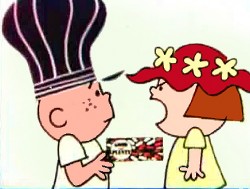 - Jack Schnerk‘s daughter, Mary Schnerk Lincoln, has put three of her father’s commercial sample reels onto YouTube .
- Jack Schnerk‘s daughter, Mary Schnerk Lincoln, has put three of her father’s commercial sample reels onto YouTube .
Just last week I found myself using one of those reels to showcase a Rowland Wilson designed commercial done for Phil Kimmelman & Ass. Seeing that reel again, brought me back to the other two reels on YouTube, and the great work animated by Jack. There are a number of well-known and collector’s item commercials in these reels. Included are spots designed by the likes of Gahan Wilson, Tomi Ungerer, Charles Saxon and, of course, Rowland Wilson.
Jack Schnerk was a great animator who deserves considerably more attention. He was a strong influence on me in the first eight years of my career and taught me quite a few large principles about the business. He also told me a few stories of his work as an assistant at Disney’s on Bambi and Dumbo as well as the great times animating at UPA and the difficulties of animating at Shamus Culhane’s studio. Actually, he didn’t tell me about his problems with Shamus; another animator did. Jack complained about the business, but never about how he was treated.
He did have an exercise which he thought was important for an animator to pass. He suggested you animate a character walking in a 360° circle away from and back toward the camera. This is a tough test of mechanical ability, and Jack is right; it’s tough and can prove your mettel. (Milt Gray does just that with his somewhat vulgar character, Viagri, but the animation is impeccable. Milt’s a first rate animator.)
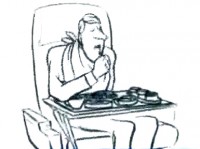 I wish I had more samples of the many scenes Jack animated that I assisted. He worked in a very distinct style – I don’t think I’ve seen anyone else ever draw that way. Somehow, the very rough drawings weren’t hard to clean up, and, though he worked very rough, he didn’t leave the bulk of the work for the people following him. He was concerned about the timing and did every drawing he needed to make sure that timing worked. Most of the time we worked together, he had no chance to see pencil tests. Only on Raggedy Ann did he have that luxury, yet he was always taking a chance on the scene, pushing to some new way of doing it. I think of all those Hubley scenes that went to color art, yet Jack had done some daring moves that could have made some of the scenes go bust. None ever did.
I wish I had more samples of the many scenes Jack animated that I assisted. He worked in a very distinct style – I don’t think I’ve seen anyone else ever draw that way. Somehow, the very rough drawings weren’t hard to clean up, and, though he worked very rough, he didn’t leave the bulk of the work for the people following him. He was concerned about the timing and did every drawing he needed to make sure that timing worked. Most of the time we worked together, he had no chance to see pencil tests. Only on Raggedy Ann did he have that luxury, yet he was always taking a chance on the scene, pushing to some new way of doing it. I think of all those Hubley scenes that went to color art, yet Jack had done some daring moves that could have made some of the scenes go bust. None ever did.
I met Jack at the Hubley studio, then again when I worked for Phil Kimmelman. At Raggedy Ann, I dropped Jack’s name as often as I could until Dick Williams finally saw him, and brought him on board. There was no doubt he would, Jack was that gifted. At least once a week at Raggedy Ann, Jack would give me some original piece of advice, and the more I followed it, the better my work grew. Something as simple as draw rough. I’d been an assistant too long, and my clean line would assure that my animation would never move out of those lines.
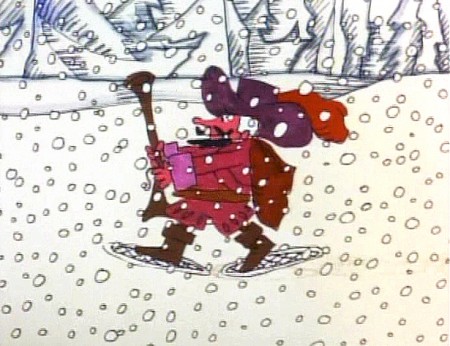
Jack Schnerk animated the French trapper sequence. There was such a rush
on the scene that I remember Jack bringing it in saying he hoped it would work.
Jack had a dark side, that I appreciated, but he also brought a lightness and individual sensibility to the work he did. He took chances in his animation and timing and sometimes failed but usually succeeded with them. That’s more than I’ll say for most of the animators I’ve met in the business.
See
Though not always the best quality, you can also watch a few of the longer, famous short films Jack animated on:
- Gerald McBoing Boing by Bobe Cannon. Jack told me that this includes the first scene he ever animated, even though he didn’t get credit. He did Gerald running alongside the train (starts at 4:41)
Tender Game by John & Faith Hubley
Really Rosie directed by Maurice Sendak
A Nose by Mordi Gerstein
The Violinist by Ernie Pintoff
Give Me Liberty by Ralph Bakshi is one of many bad shorts done for Terrrytoons at the end when Bakshi was in charge.
After reading this post today, Bill Peckmann sent the following note:
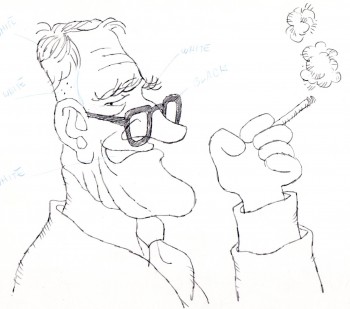 Hi Michael,
Hi Michael,
Your post today on Jack was just wonderful!
When I broke into the business in 1962 at Elektra Films, Jack’s room was the one they put me into. It was pure heaven! As a super, wet behind the ears novice, to be in the same room with someone that had ACTUALLY worked at Disney and UPA, you gotta be kiddin’!
My luck held out further because I assisted/followed up Jack (at Focus and PK&A) on all of the print cartoonist/designer spots you mentioned today. I would have done that work without pay! The combination of Rowland and Jack on a job, I still need smelling salts.
As when we all worked on Rowland’s spots, where I did those caricatures of Jack, ‘Sounds of Focusville’ and ‘Kimmelman of the Klondike’, I also did this caricature (attached) in Gahan’s style of Jack when we worked on ‘Carter Hall, Pipe Tobacco’ together.
I will pull together Xerox copies, pencils and stats of the art of Gahan, Bob Weber, who ever I can lay my hands on, etc. of the spots that Jack animated plus a JS rough or two.
We can look forward to more of Jack Schnerk next week, thanks to Bill’s collection.
Bill Peckmann &Books &Comic Art &Illustration 27 Jul 2012 06:46 am
Whites of Their Eyes – 3
Whites of Their Eyes, Rowland Wilson‘s book (1962) which collects his early cartoons, is the subject of this and a couple of other recent posts. (Part 1 & Part 2)
Bill Peckmann has been kind enough to share some scans with us, and I’m ravenous enough to hurriedly post every scrap of Mr. Wilson’s work. I came into animation fully aware of his great work, which I’d often cut from many of the magazines in which they were published. I think I’d first met him, rather briefly, at my short stint inbetweening at Phil Kimmelman’s & Ass. I had little more than the opportunity of telling him how much I admired his work. I worked on a number of Schoolhouse Rock pieces (Lucky 7 etc.) that he’d designed. Later on, I got to know him a bit better through my association with Dick Williams. I also knew his daughter, Amanda, through animation circles at the time. She worked on Raggedy Ann, where I was a supervisor. My connection, in real life, was limited, but my appreciation for his work great. Here’s Part 3 of Whites of Their Eyes.
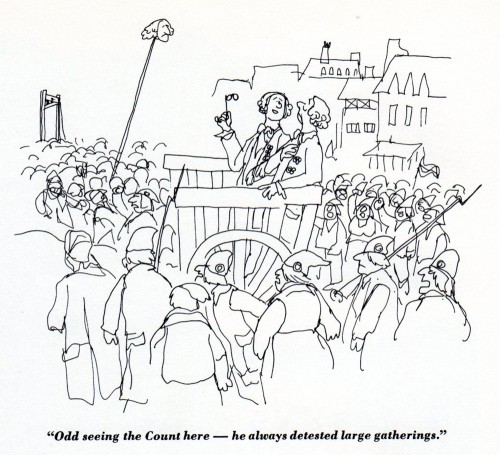 1
1
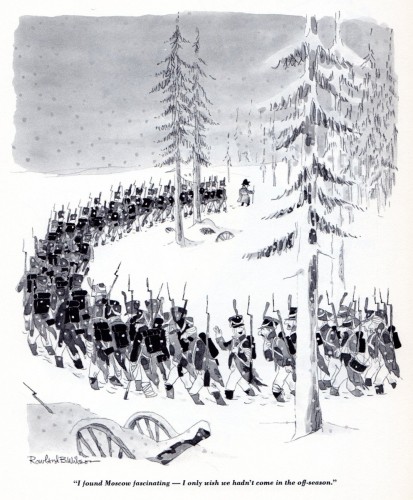 3
3
Does it get any better than this cartoon?
Here are some photos taken in 1970 at Focus Design Studios.
They are of some of the crew that produced and work on
Rowland’s early TV commercials, like Utica Club’s ‘Mountie’ beer spot.
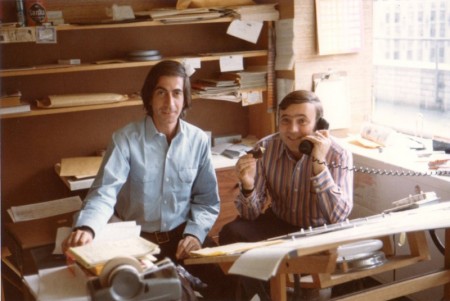
This is Sid Horn, producer and Phil Kimmelman, director.
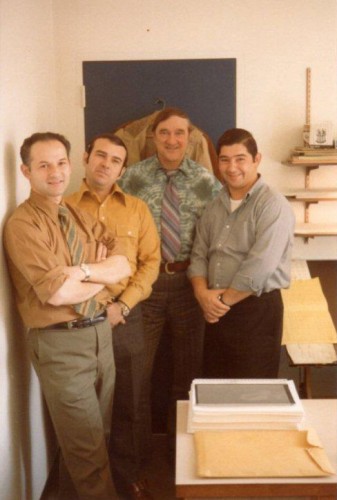
Dante Barbetta, Roger Mejia, Gerry Dvorak and Victor Barbetta.
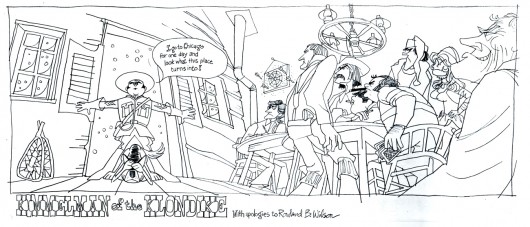
from Bill Peckmann: I’m sticking this drawing on the end because
it was done about a year (1969), before the photos were taken.
It’s one you’ve posted already quite a few years ago, but
maybe this photostat might be of better quality?
.
.
I’ve split the drawing up and used George Griffin’s notes to mark up and identify the people within the caricature and to make it a bit easier to read.
The Mountie ad starts at 3:31.
Another Rowland Wilson ad starts at 0:31.
